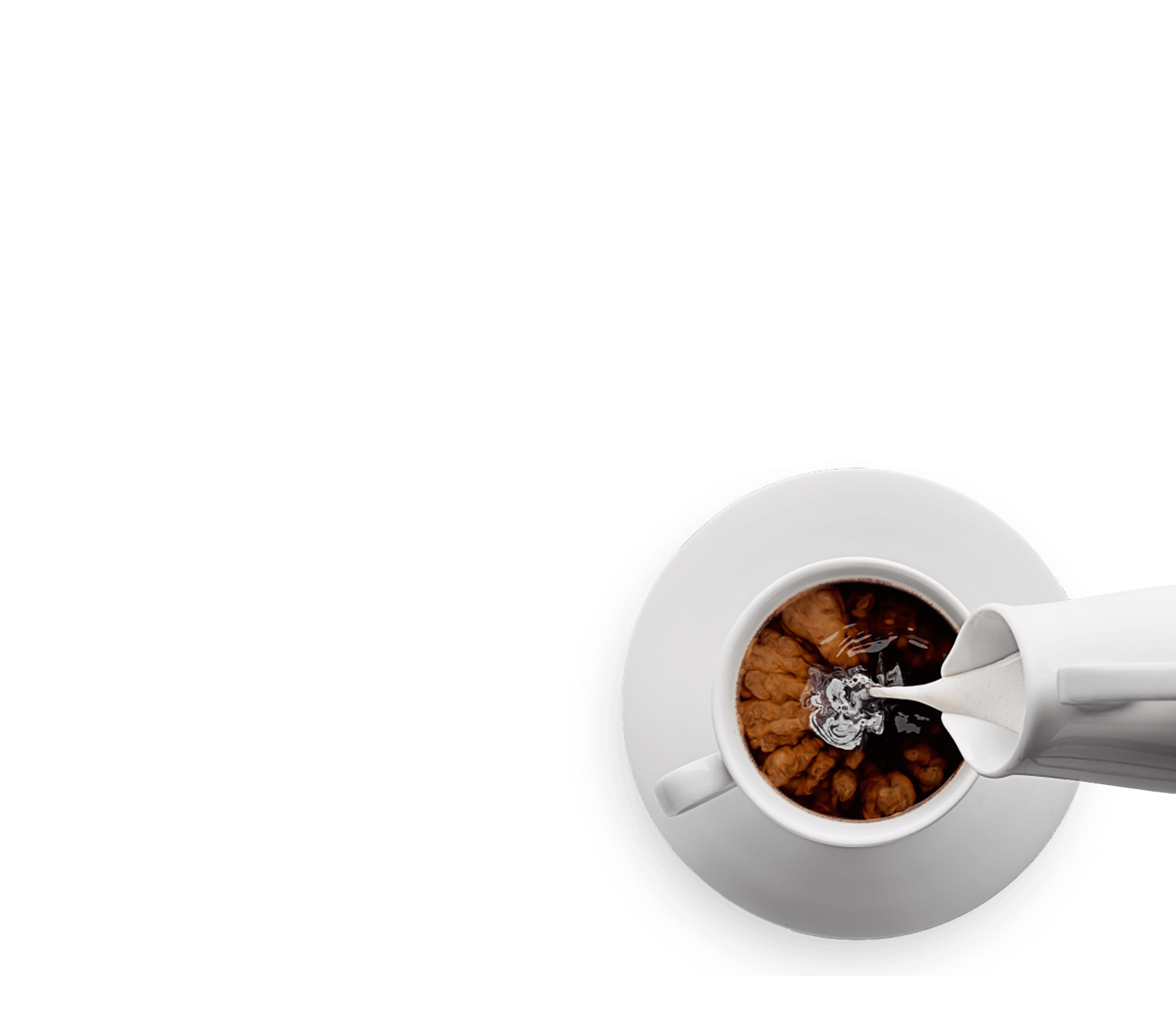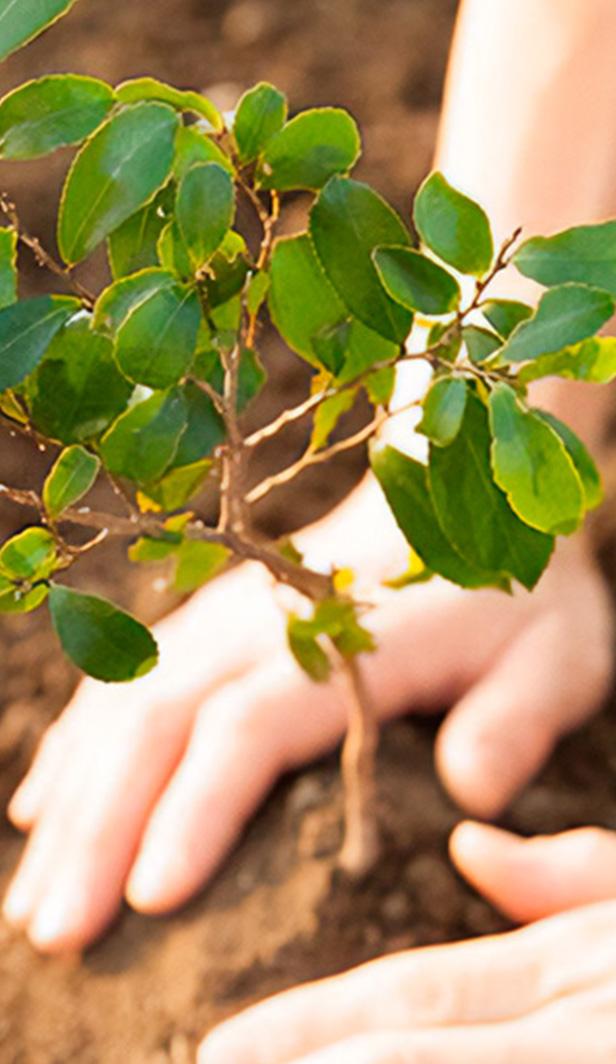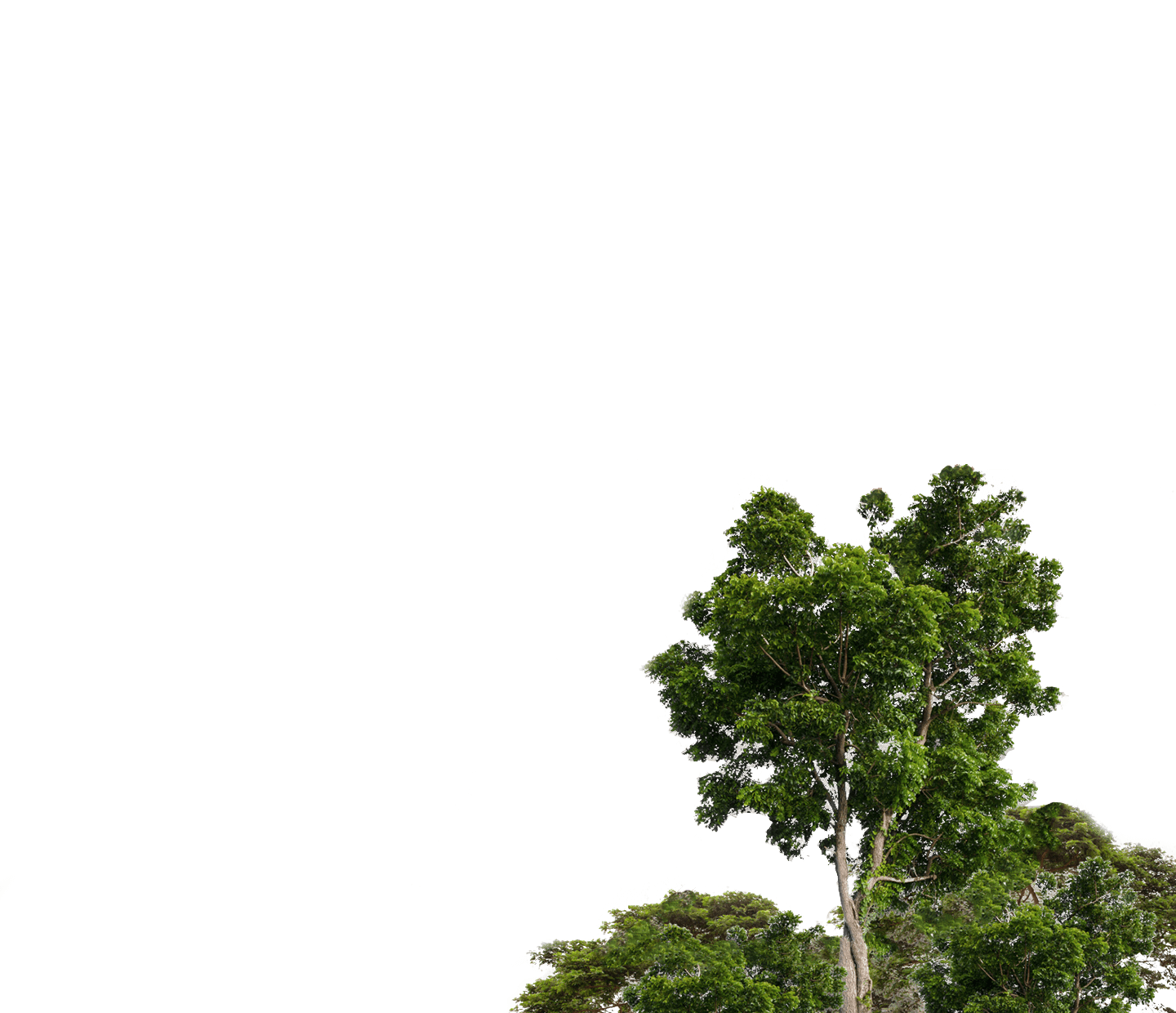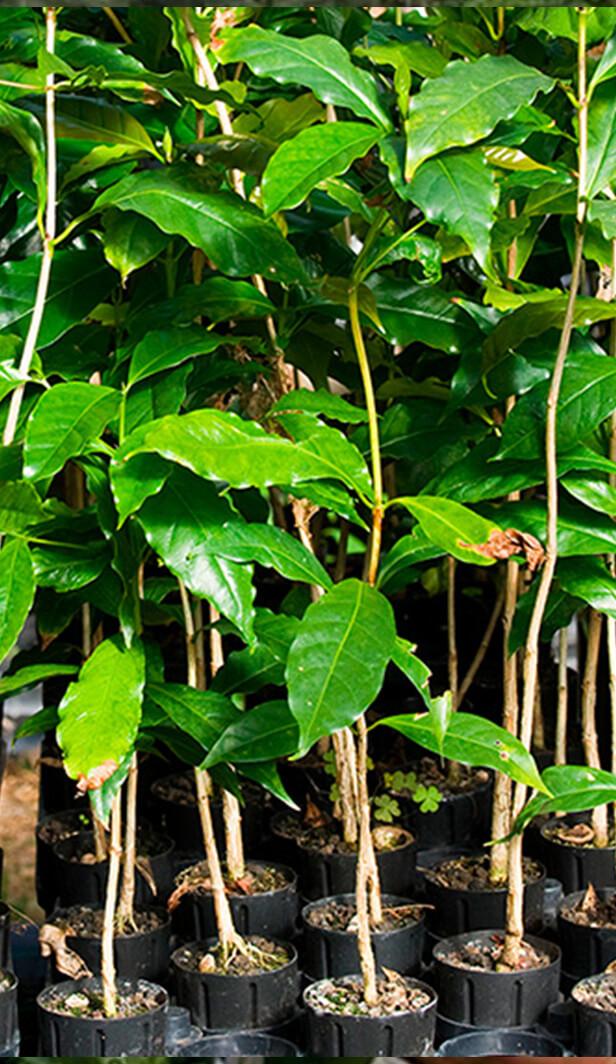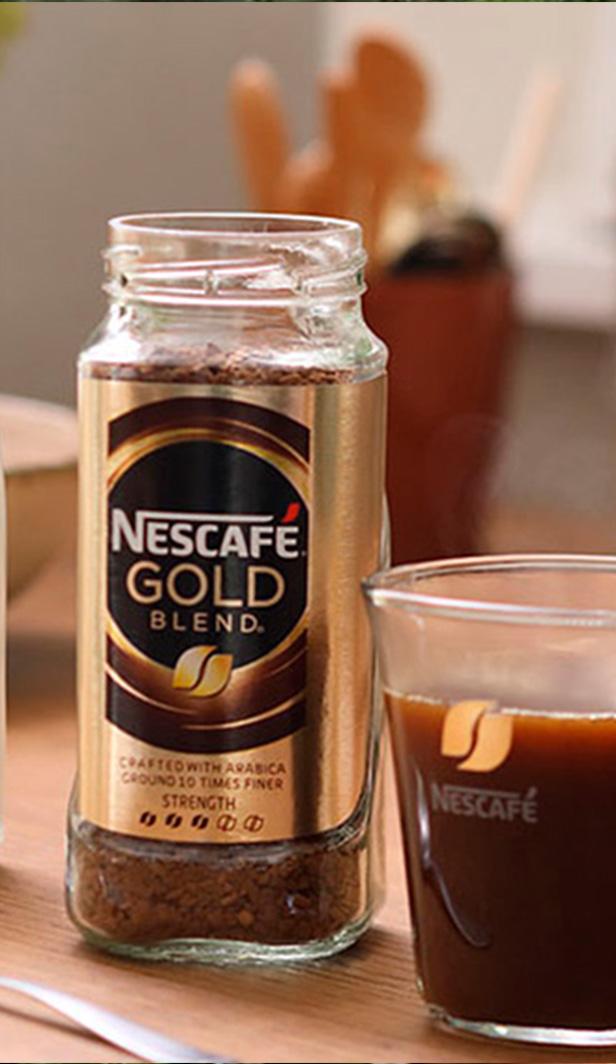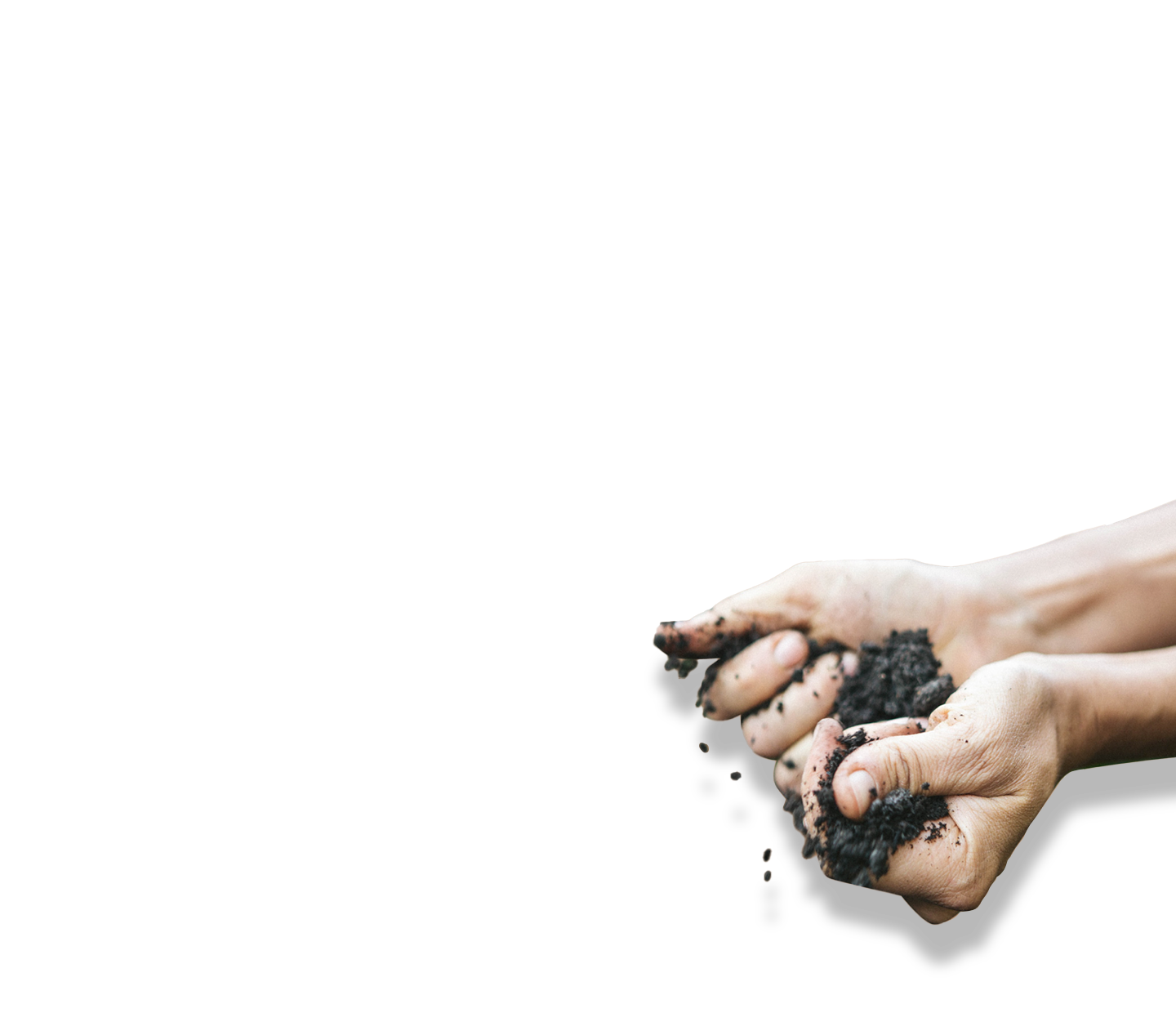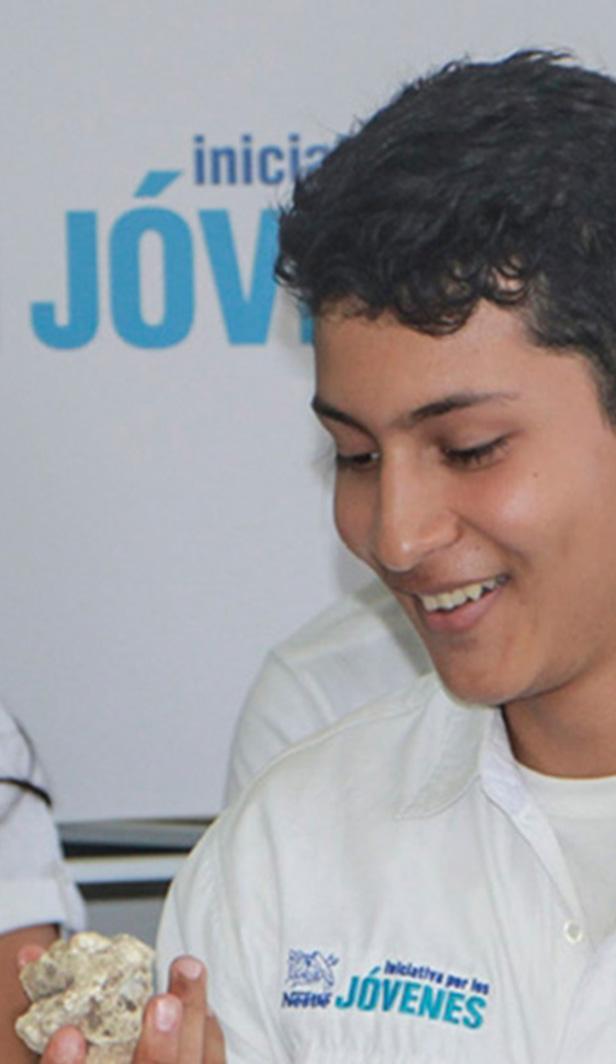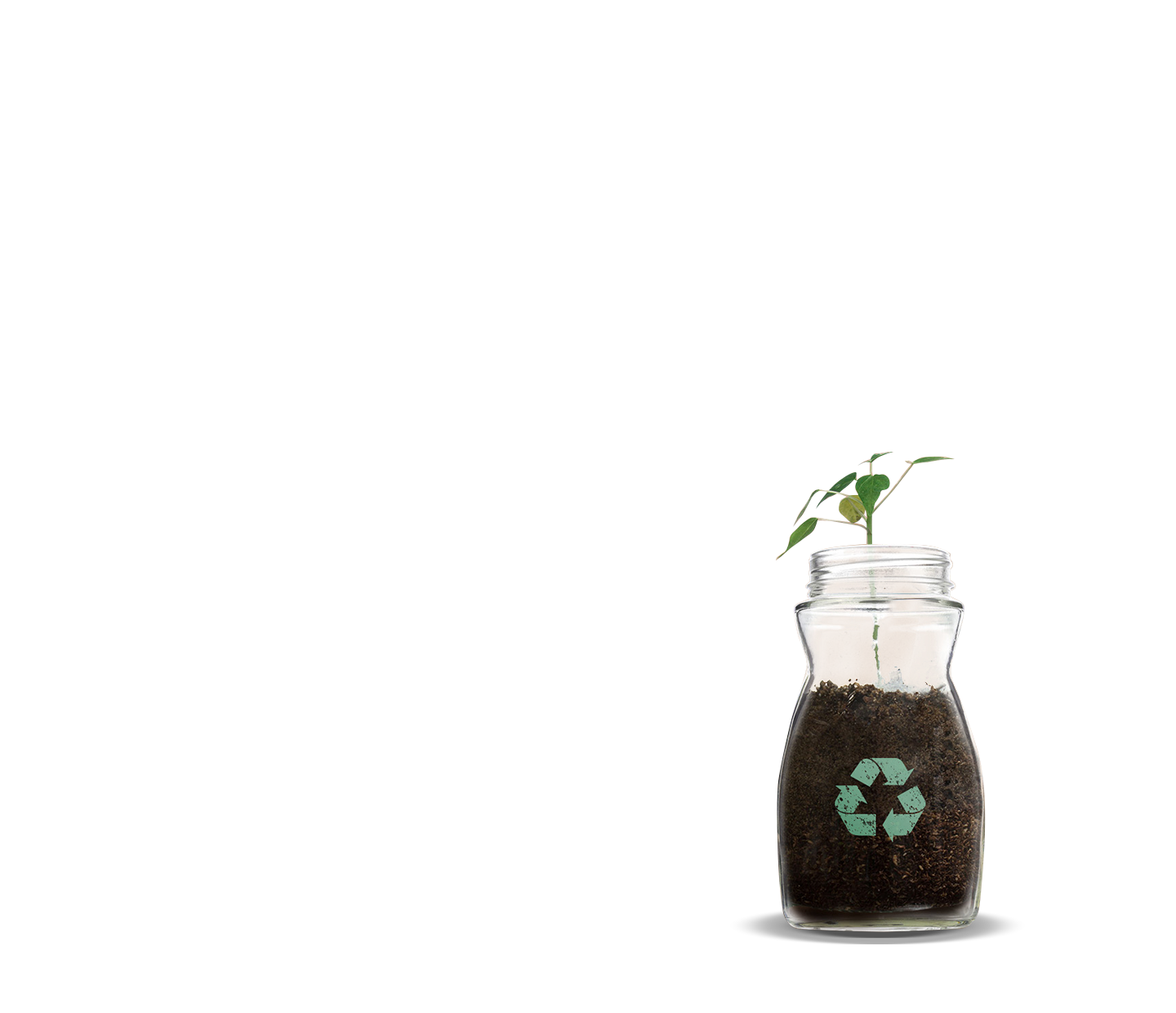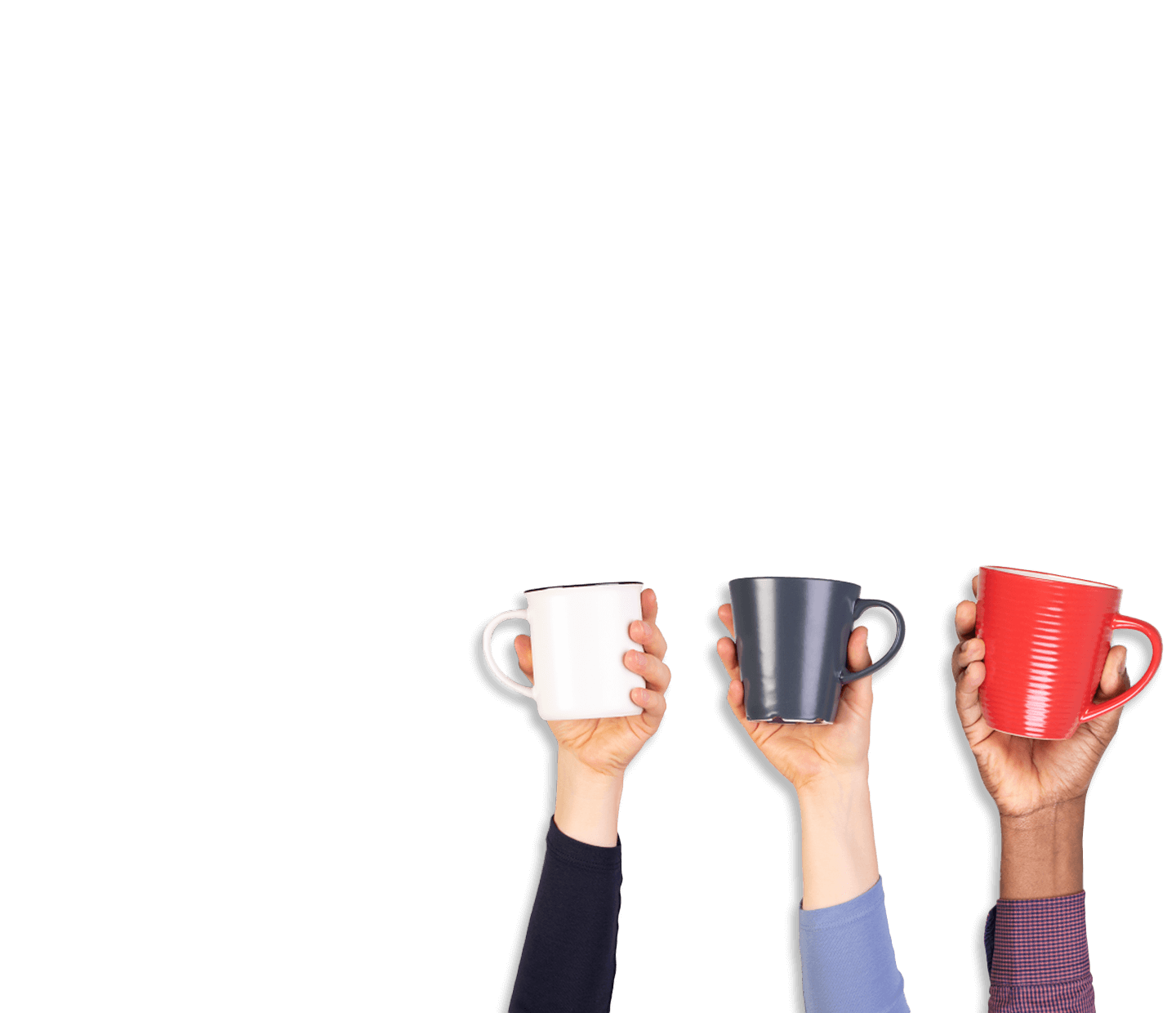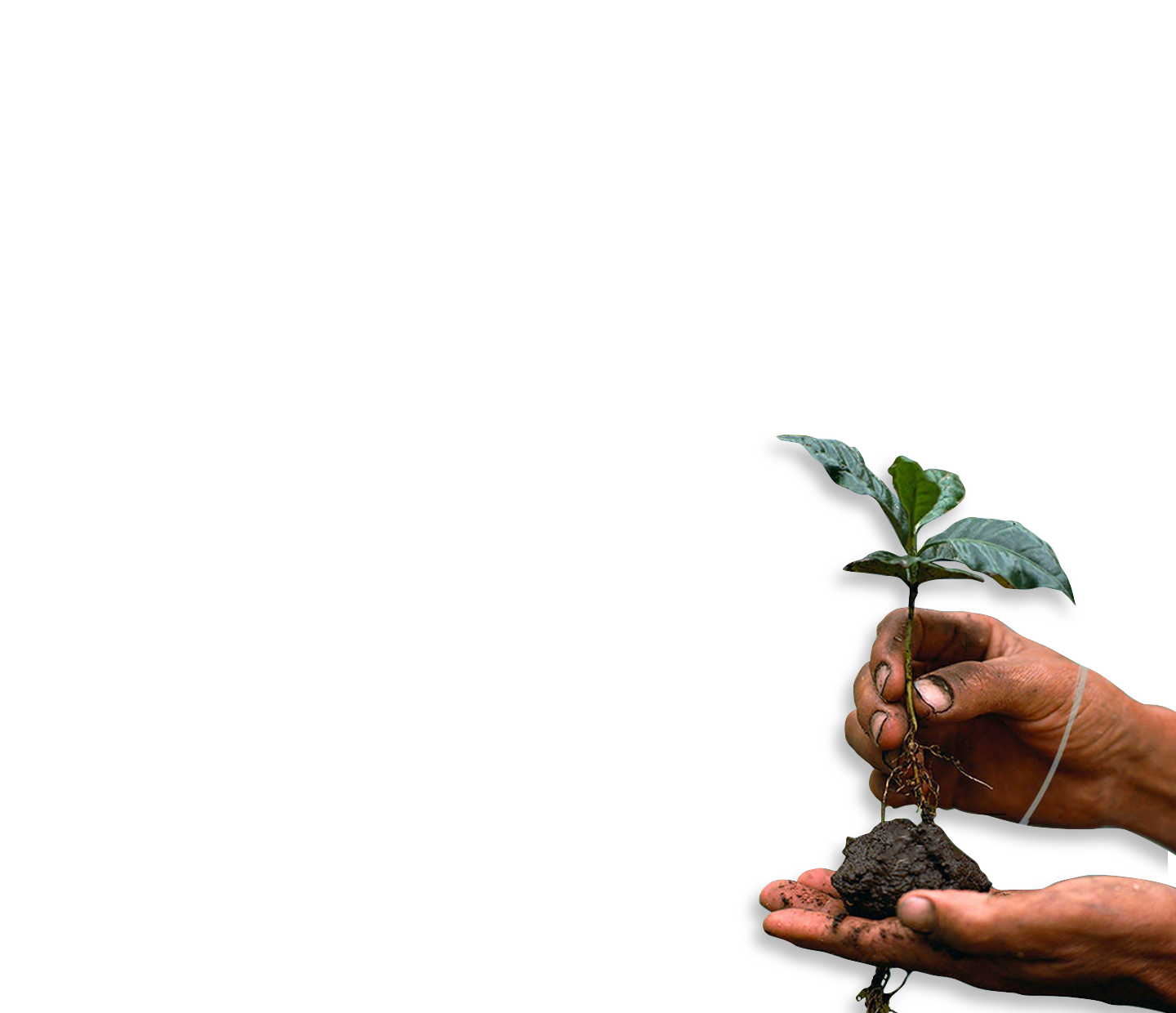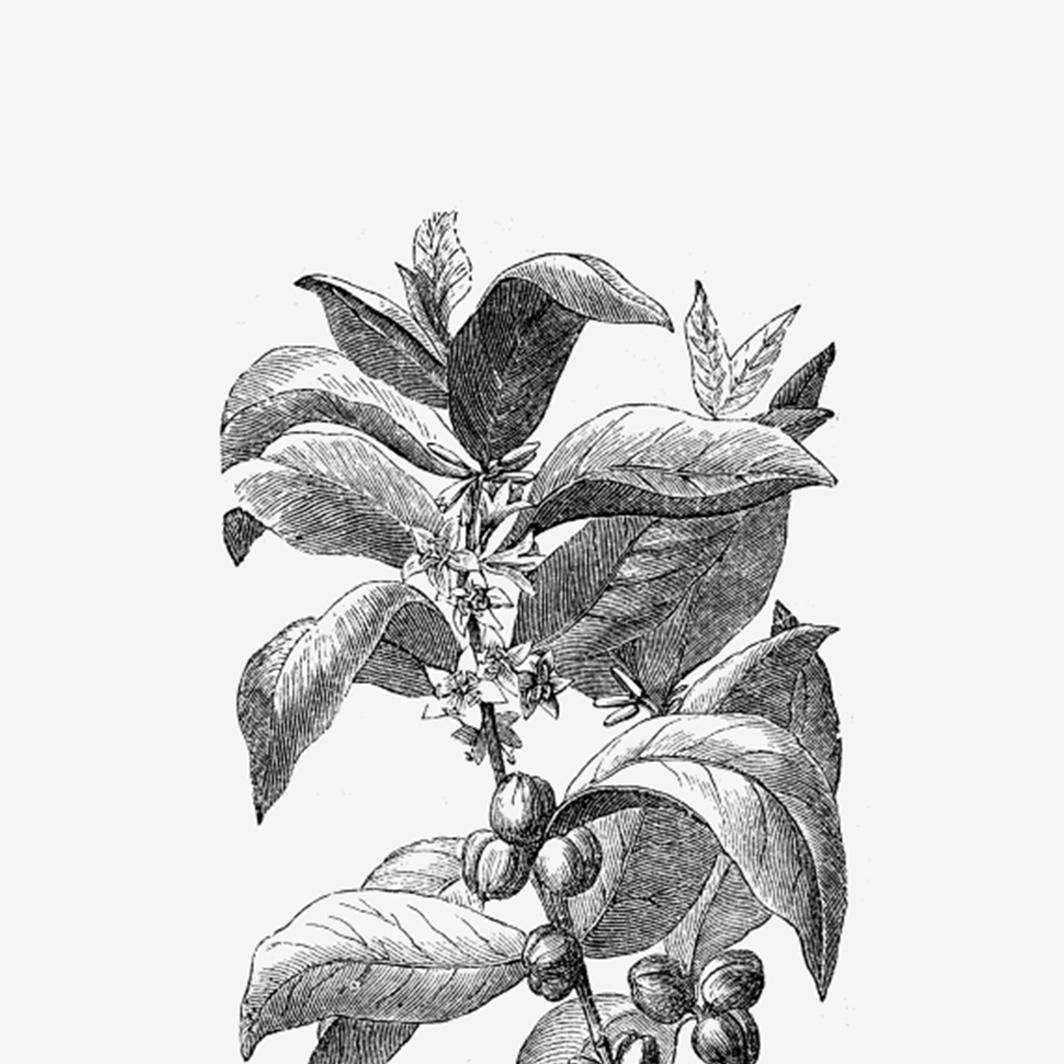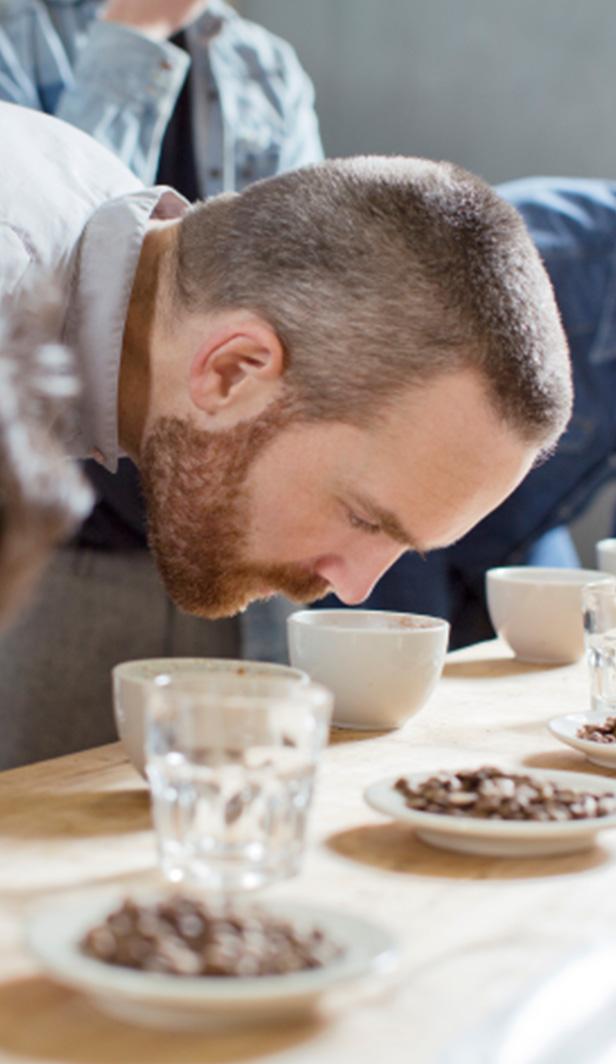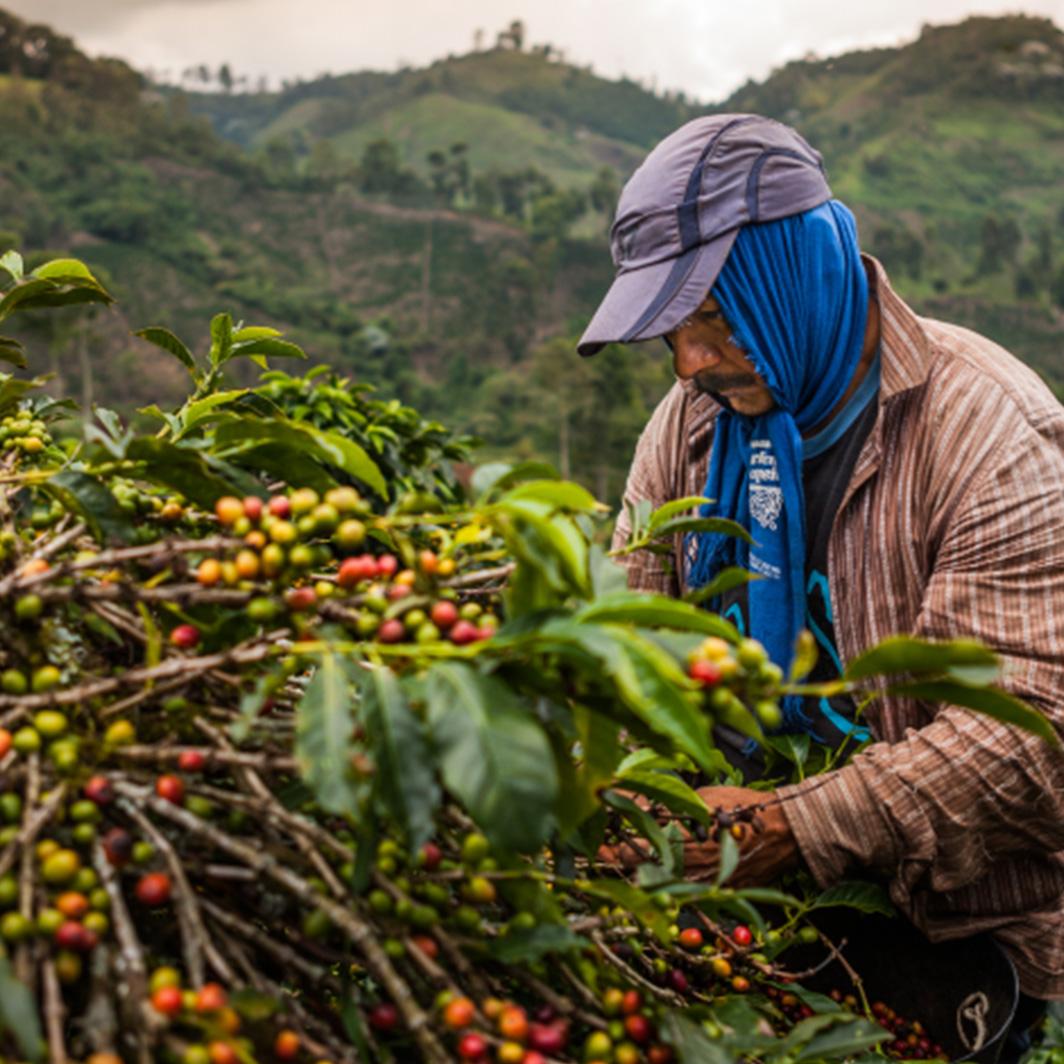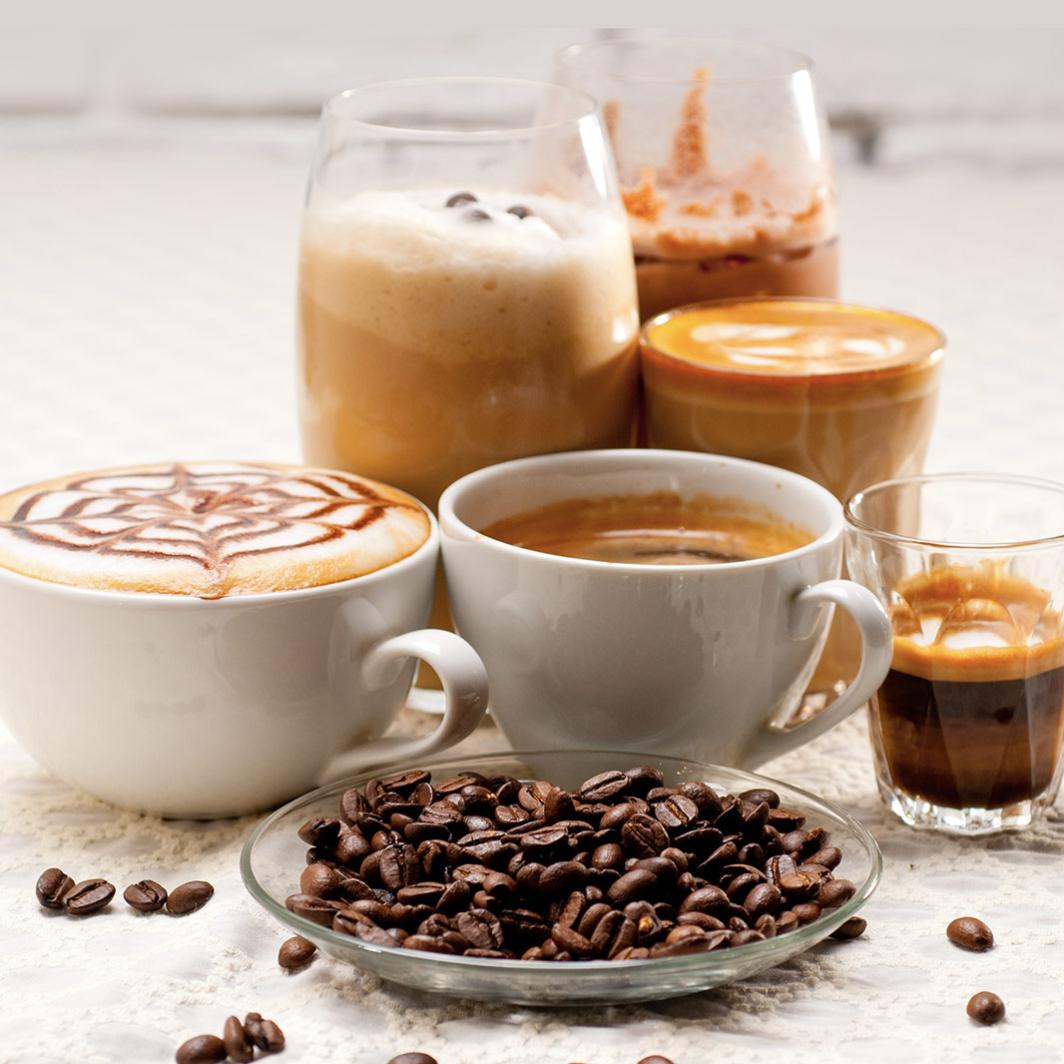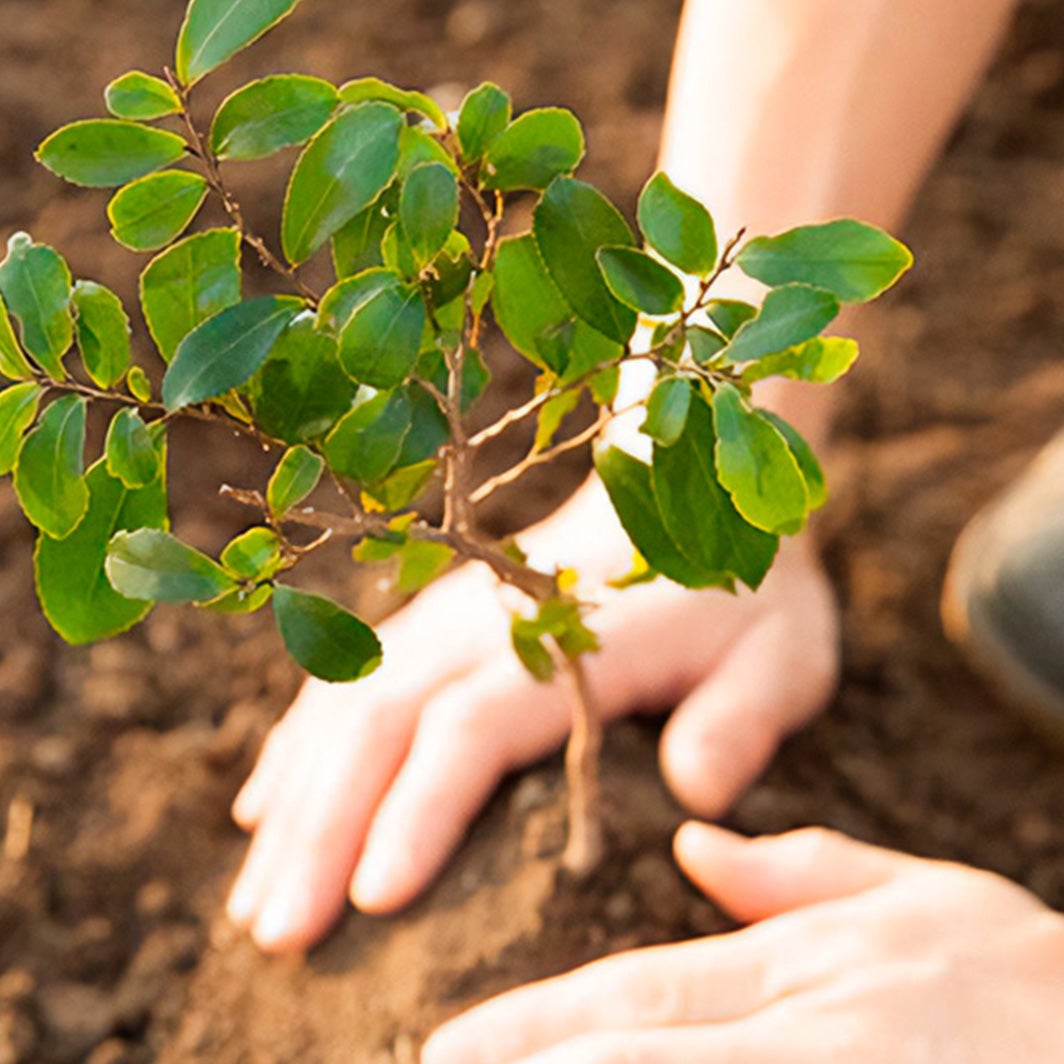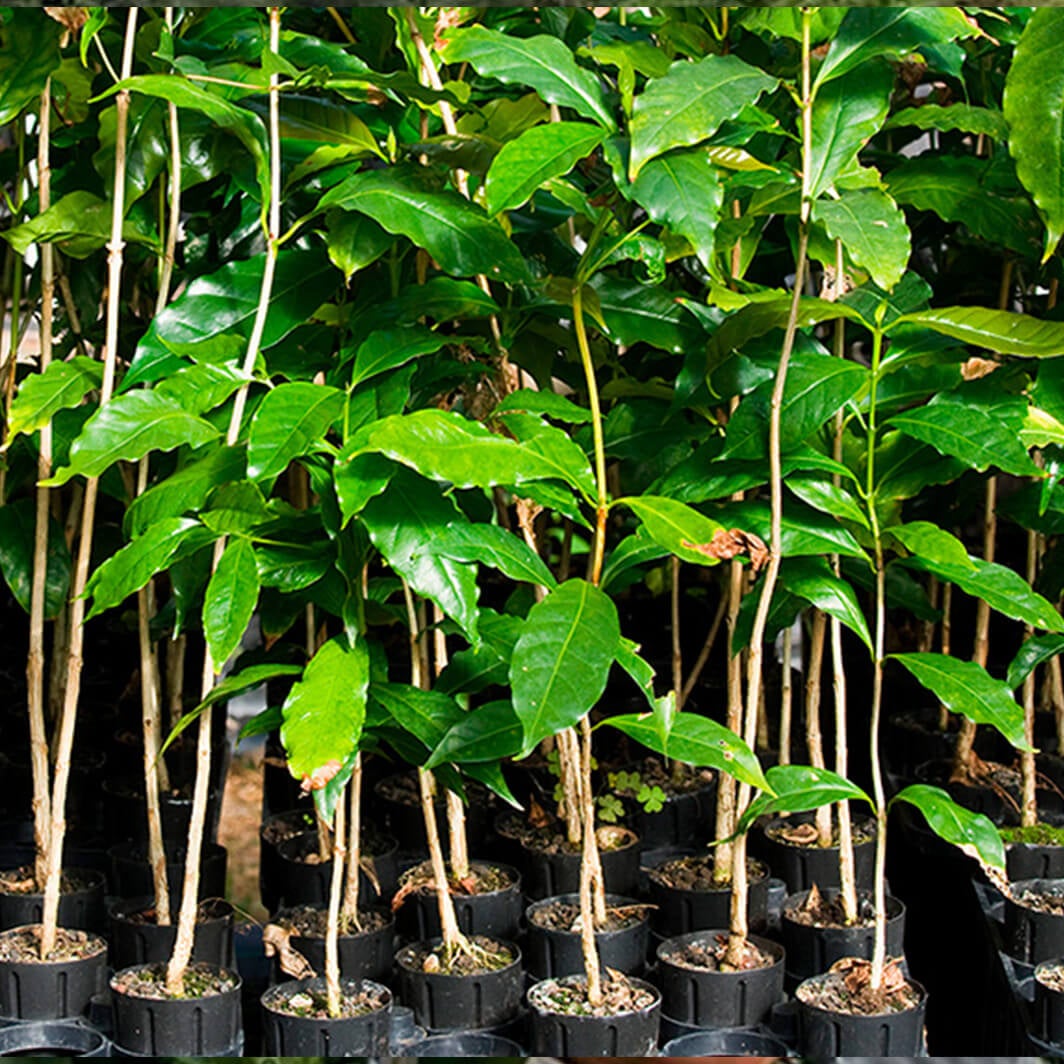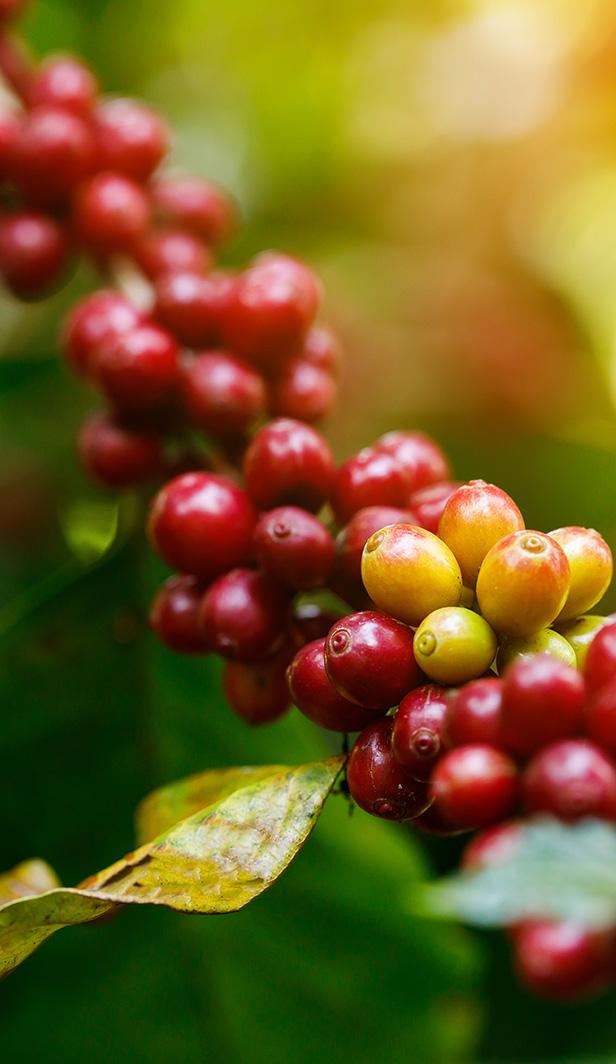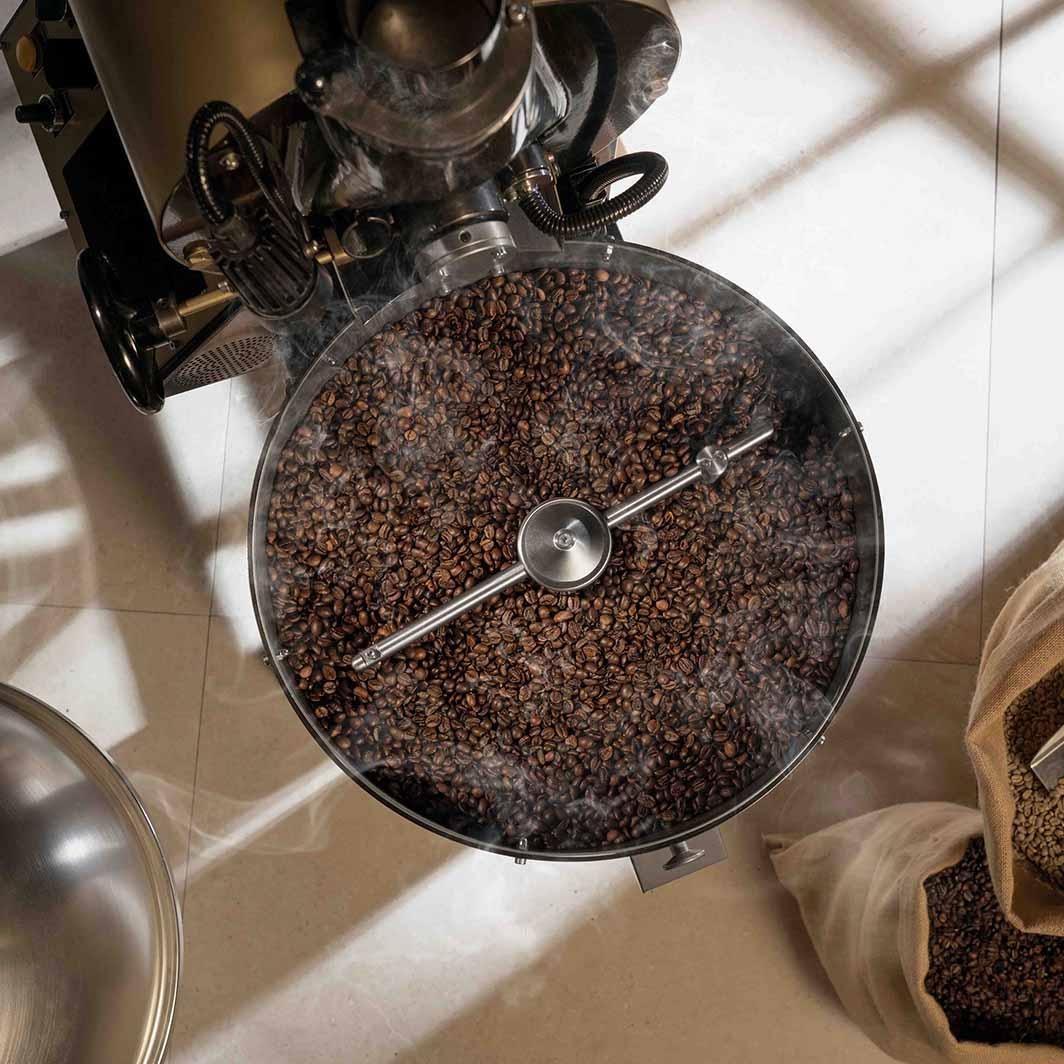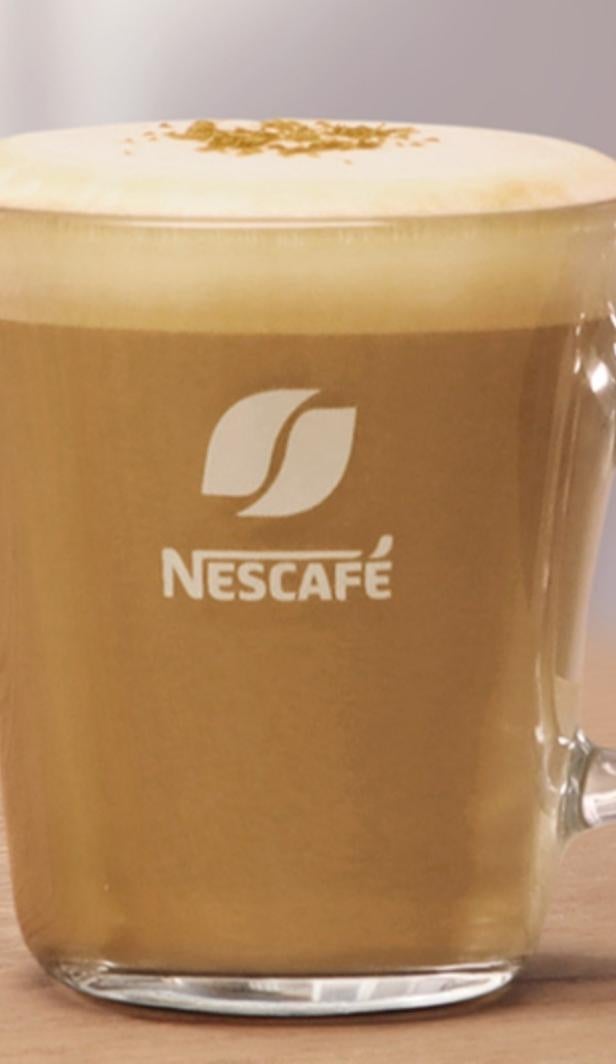What is a café au lait?
What does it mean?
The café au lait is made using brewed coffee and steamed milk, in a typical ratio of one part coffee to one part steamed milk with no froth or foam on top (coffee shops will sometimes add it though). The coffee base is usually made with a French press or a drip, the milk must always be steamed. The café au lait is not the same as white coffee which is brewed coffee with cold milk or powdered whitener added.
What does ‘café au lait’ mean?
Café au lait hails from France and simply translates to ‘coffee with milk’. The term ‘au lait’ means to prepare with milk. It’s usually prepared with half coffee and half heated milk, making it the perfect coffee to sip slowly.

Café au lait origins
The beverage goes back a long way and references to the drink are even found in the letters of Marie de Rabutin-Chantal, the Marquise de Sévigné in the early to mid-17th century. Today the coffee is still enjoyed across France, traditionally served in an oversized mug or bowl for dunking pastries during breakfast.
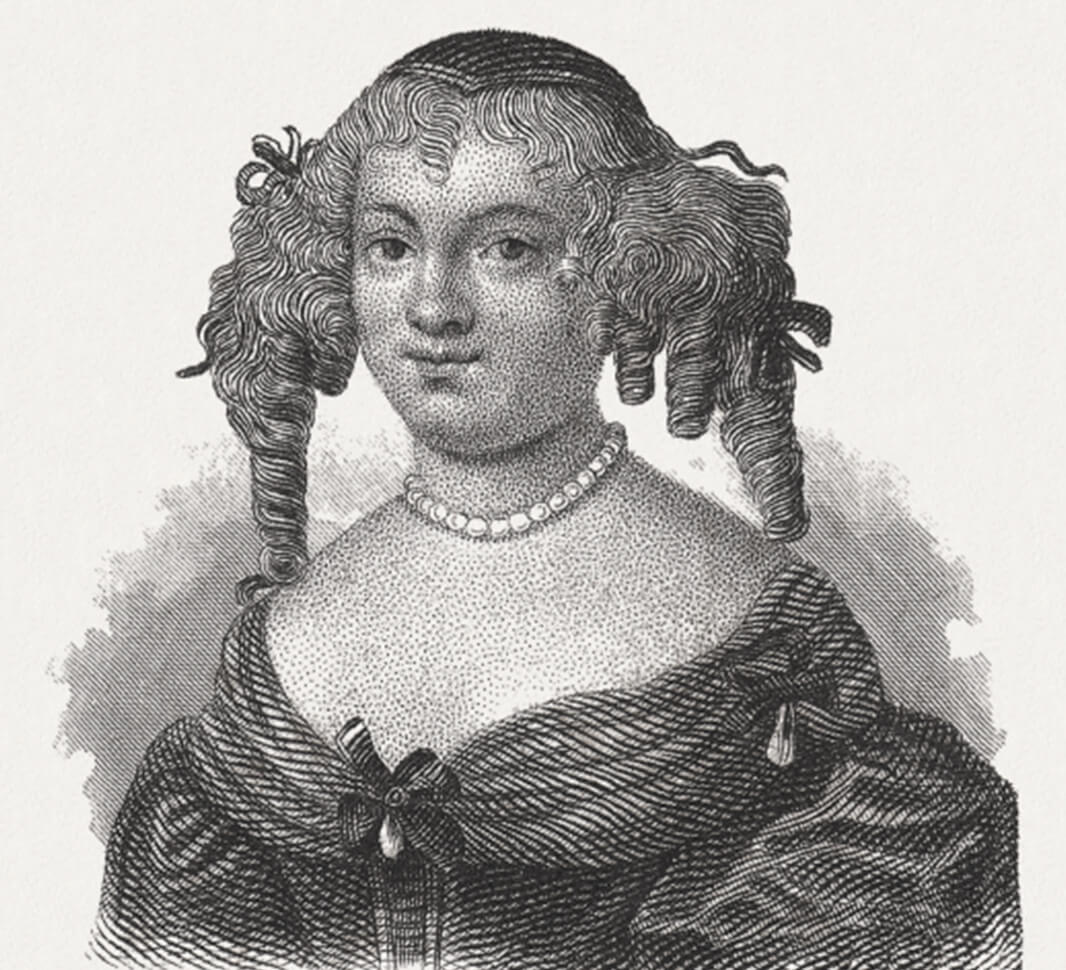
Café au lait hails from France, meaning ‘coffee with milk’. ‘Au lait’ means to prepare with milk. It’s usually prepared with half coffee and half heated milk, making it perfect for sipping slowly.
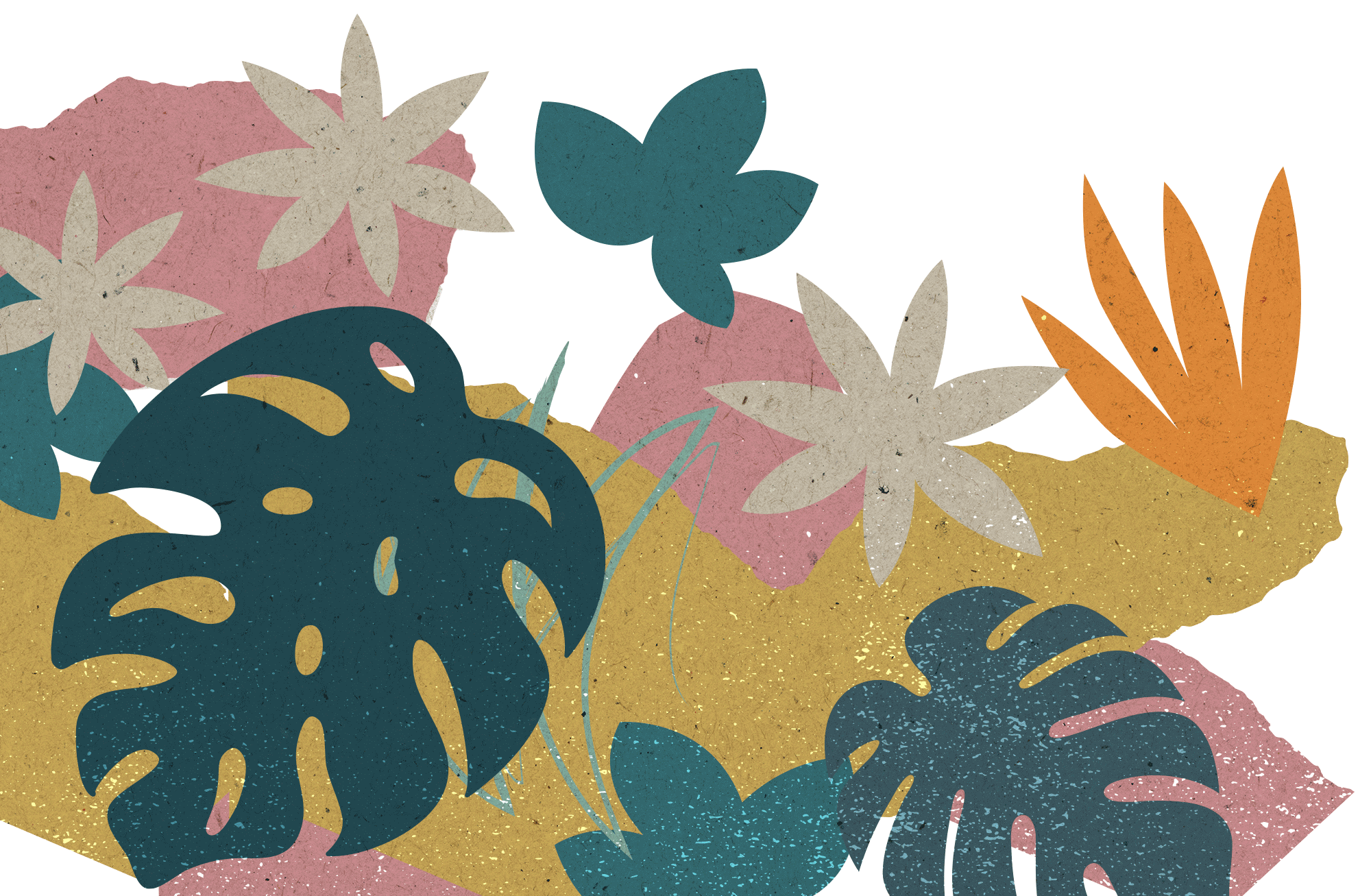
Variations of the café au lait
Interestingly, the café au lait has many variations around the world. In Poland it’s known as the ‘kawa biala’, in Germany as ‘milchkaffee’, in Hungary as ‘tejeskávé’, in Dutch it’s a ‘koffie verkeerd’ and in Brazil ‘café com leite’. One of the most interesting distinct versions of the Café au Lait is found in New Orleans where the coffee is combined with chicory for a strong, bitter flavour that’s also thicker in consistency. This variation dates back to the American Civil War when coffee was scarce, mixed with chicory to make it last longer.

What’s the difference between a café au lait and a Latte?
The café au lait is often confused with the latte as they are both milky coffees, but they are quite different. The latte is milkier, made with two distinct, thicker layers of steamed and foamed milk. The Café au Lait tends to be made with regular brewed coffee (from a French Press or drip), whereas the latte is always made with an espresso base.
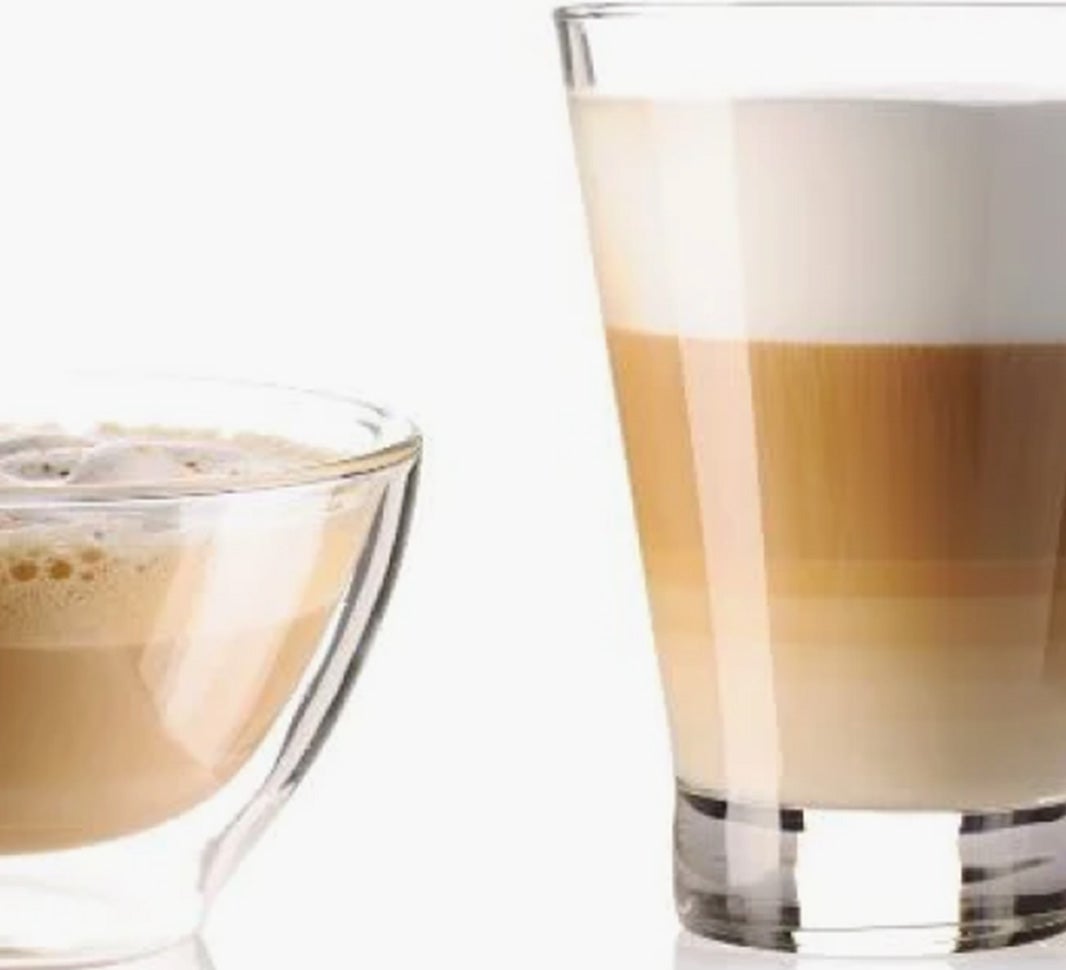
Today’s community favourites
Discover some of the most enjoyed articles from across the site

Reducing our greenhouse gas emissions
Fueling the power of nature
Healthy soil and forests are among the most effective means of reducing carbon in the Earth's atmosphere. To address the extensive NESCAFÉ® supply chain, which includes thousands of farms and transportation networks, our goal is to safeguard both soil and forests in order to bring long-term sustainable change.
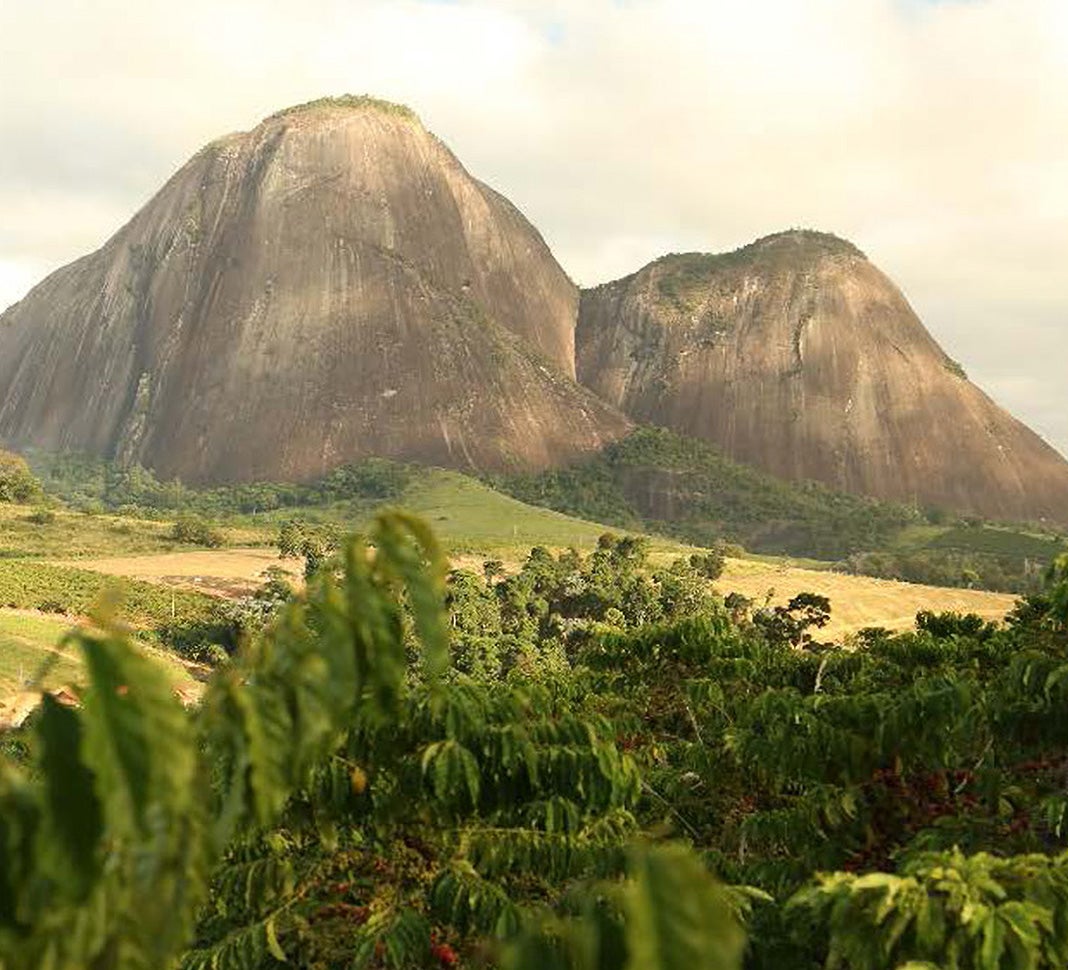
When more really means less
The world’s forests absorb approximately 2.6 billion tons of carbon dioxide a year, or about a third of all the CO2 released from burning fossil fuels. Forests also provide nutrition, shelter, energy, medicine, and livelihoods to around 1.6 billion people*. Unfortunately, as global populations and demand for food grows, forests are at risk of being converted into farmland. NESCAFÉ® globally is working towards 100% deforestation-free supply chain for coffee by 2025, and by 2026 intends to plant 20 million native trees to help increase biodiversity, and to promote soil formation and soil health. It’s a big job but not nearly as big as what forests do for the planet.
See link for more information: Creative Shared Value Report 2022
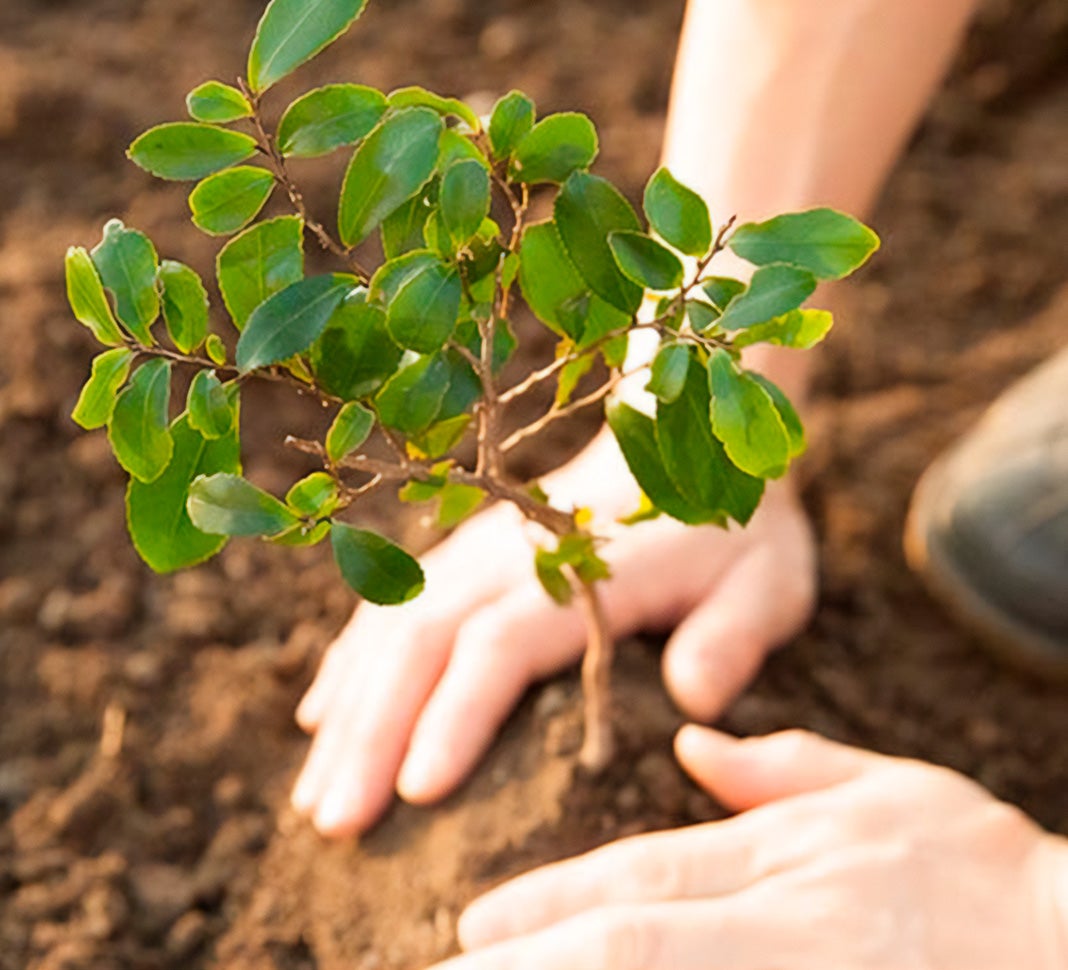
By 2025, NESCAFÉ® globally aims to achieve 100% deforestation-free coffee and by 2026 intends to plant 20 million native trees to help increase biodiversity, and to promote soil formation and soil health.
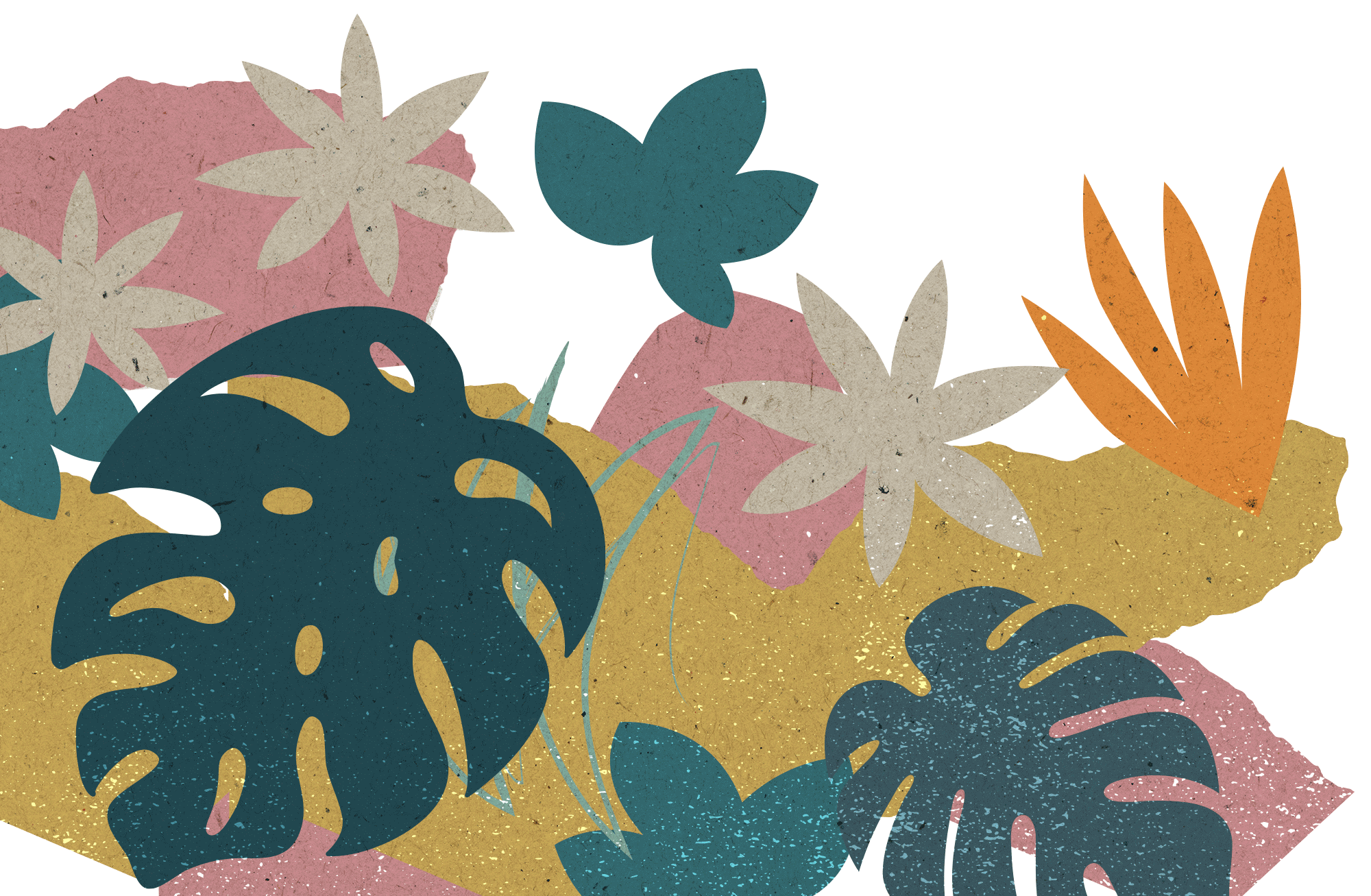
Why soil health is so important
Good soil does more than grow good coffee, it captures carbon, reduces erosion, and requires less synthetic fertiliser. As a large part of greenhouse gas emission on farms comes from fertilisers, NESCAFÉ® is helping optimize fertiliser use by providing training to farmers. From Vietnam to Mexico, Brazil and Indonesia, NESCAFÉ®'s field programs have helped to improve farming methods, resulting in farms using the optimum combinations of synthetic and organic fertilisers, and reducing the use of agrichemicals. Simply put, healthy soil helps to grow a more sustainable coffee.
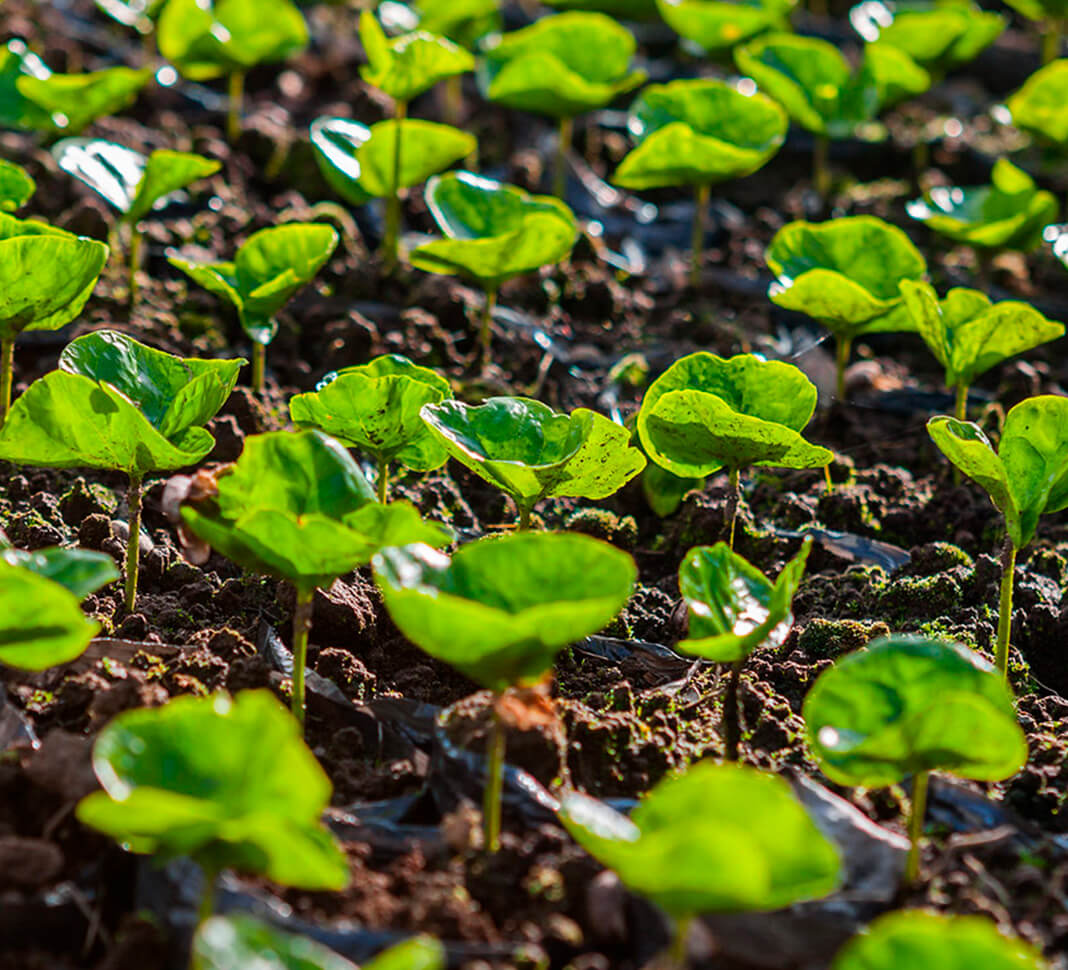
Big changes are made of small ones
To help Nestlé reach net zero by 2050, it’s not about making a few big changes, it’s about making hundreds of smaller ones. To start, our NESCAFÉ® factories in Australia are powered by 100% renewable electricity. We are also doing our best to reduce our plastic waste by reducing our use of virgin materials, and helping create circular systems that make it easier to collect, recycle and reuse our products. NESCAFÉ® aims to grow its fleet of electric, biofuel, hybrid, or plug-in hybrid vehicles. And for consumers, NESCAFÉ® encourages better preparation methods and recycling tips like boiling water at 80°C instead of 100°C. Initiatives after initiatives, we are on a path to keep reducing our greenhouse gas emissions.
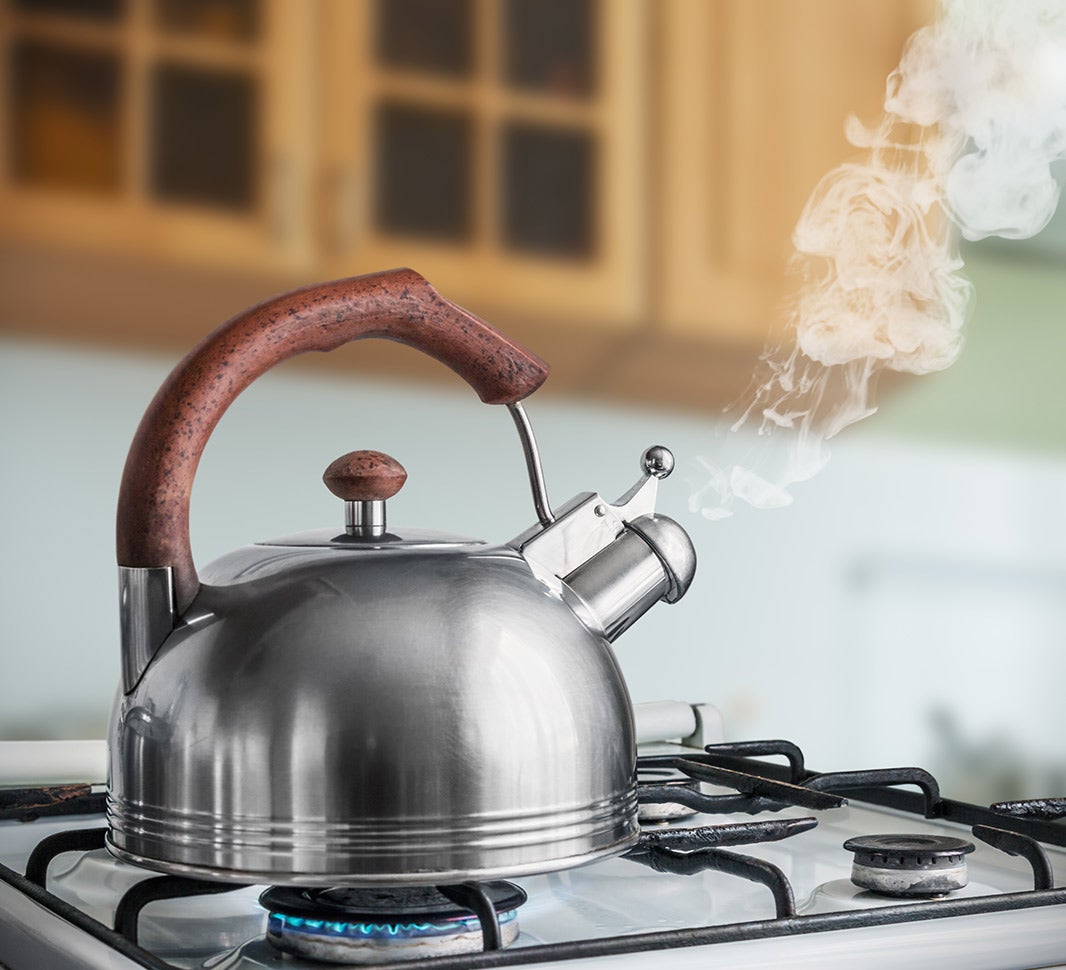
Today’s community favourites
Discover some of the most enjoyed articles from across the site

Where To Buy
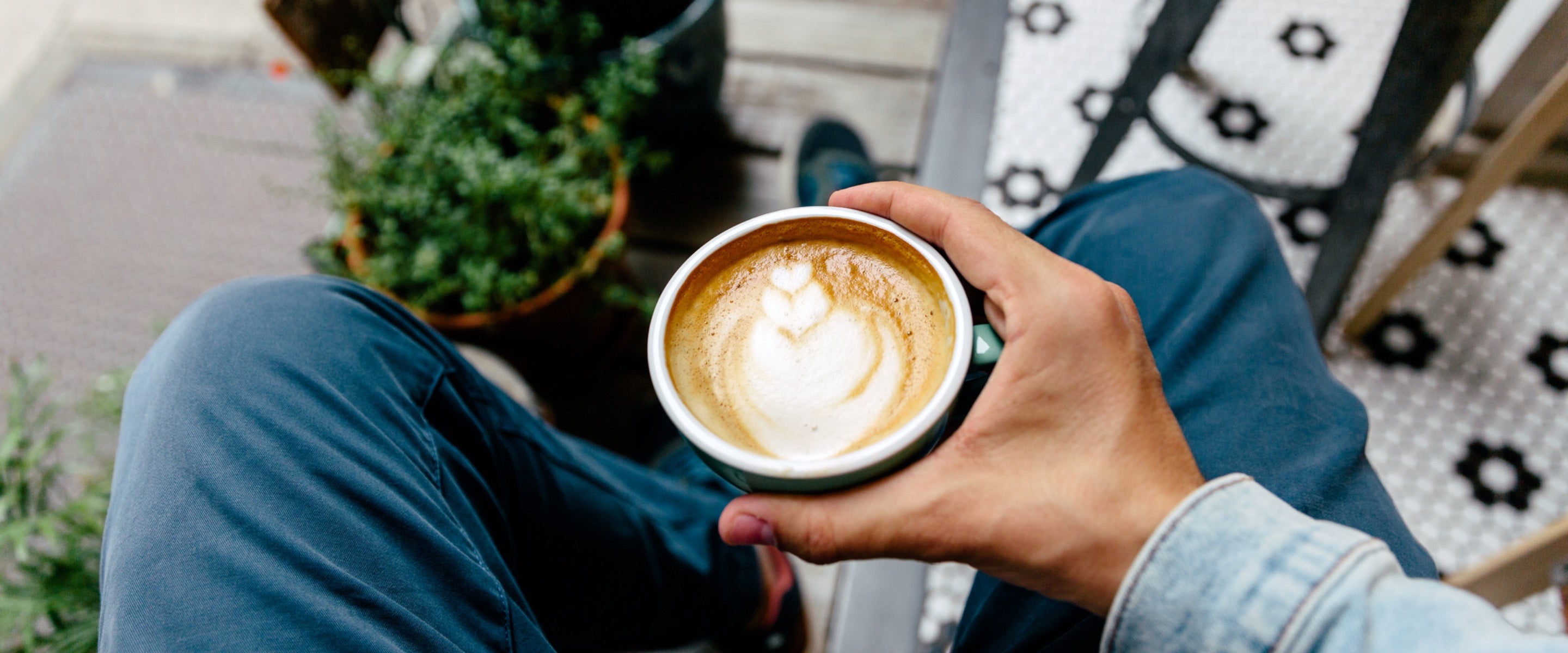
Where to buy NESCAFÉ®
With so many ways to find your favourite NESCAFÉ®, you'll never worry about running out again.

Select how you would like to find your NESCAFÉ®
Regenerative Agriculture and NESCAFÉ® Coffee
Coffee to be proud of from farm-to-cup
In Australia, our coffees are made from 100% responsibly sourced coffee beans, made possible through supporting better working conditions for farm families and workers, and the promotion of sustainable crop growth.
By 2025, NESCAFÉ® aims to reach this milestone globally. For the sustainability program, having thousands of farms across five continents monitored is quite a big task, however at this scale, doing the right thing can make a world of difference.

Why is soil health important? - The future of coffee is beneath our feet
When it comes to growing coffee, it’s all about the soil. Healthy soil not only helps make farms more productive, it helps to make them more sustainable. Healthy soil can capture carbon, requires less fertilizer, and is more resistant to the impacts of climate change. NESCAFÉ® helps several thousand farmers improve the health of the soil with regenerative agriculture.

Our coffees are made from 100% responsibly sourced coffee beans, made possible through supporting better working conditions for farm families and workers, and the promotion of sustainable crop growth.

Variety makes the farm go round
It takes more than just coffee trees to grow good coffee. Promoting biodiversity is vital for healthy soil. In Thailand and Indonesia, coffee farmers plant betel nuts, peppers, chilies, and avocados. A greater variety of trees attracts a greater number of insects that pollinate fields and support local wildlife.
More shade reduces the need for herbicides and helps enrich the soil's organic matter through the additional leaves that are shed. Trees reduce carbon emissions, control soil erosion, recycle nutrients and protect watersheds. With more crops grown, farmers can sell more products and provide food for local families. This is all made possible thanks to the biodiversity that we encourage in farming practices.
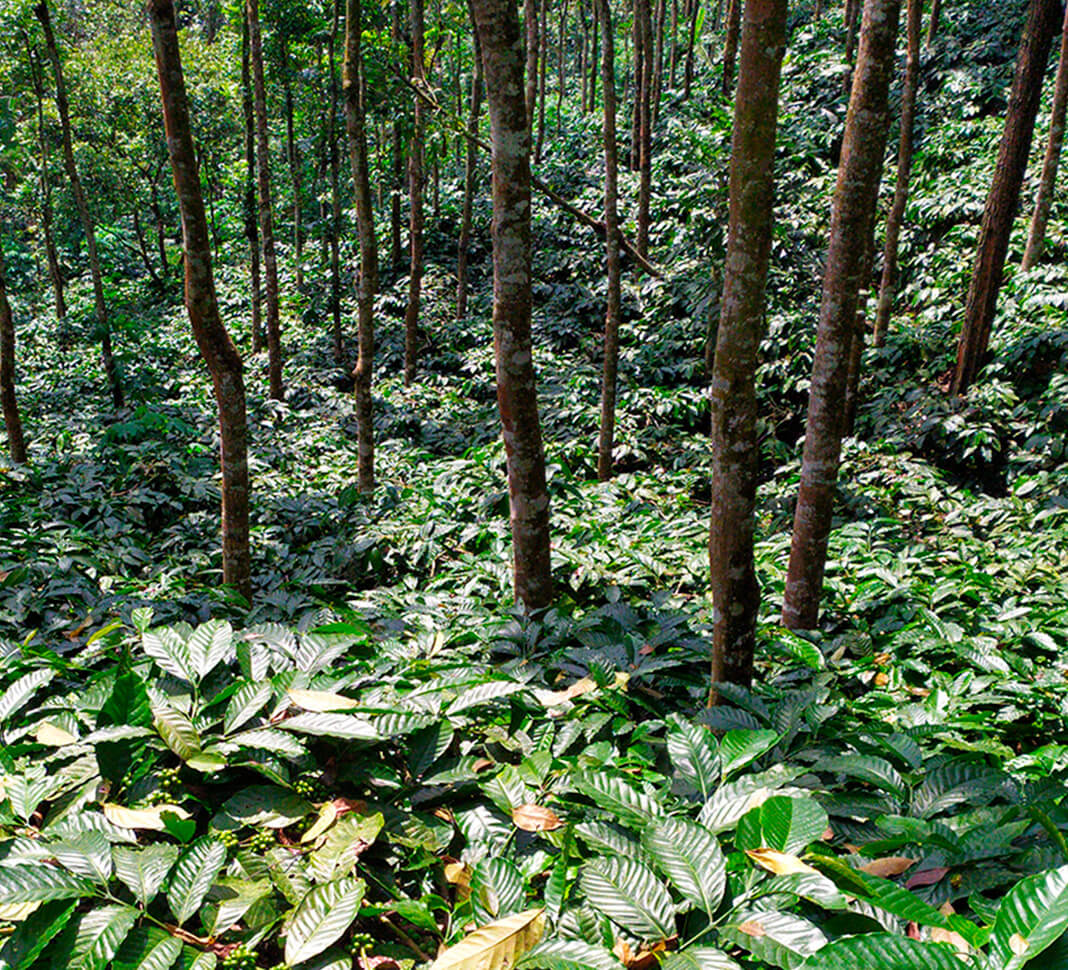
A cup of coffee can change everything
At NESCAFÉ®, we want to be a force for positive change and we're proud to have made significant steps to source responsibly and deforestation-free, increase biodiversity, and improve soil health through regenerative agriculture. Now, when you enjoy NESCAFÉ®, you can feel even better knowing that your cup of coffee is supporting the coffee world a little better.
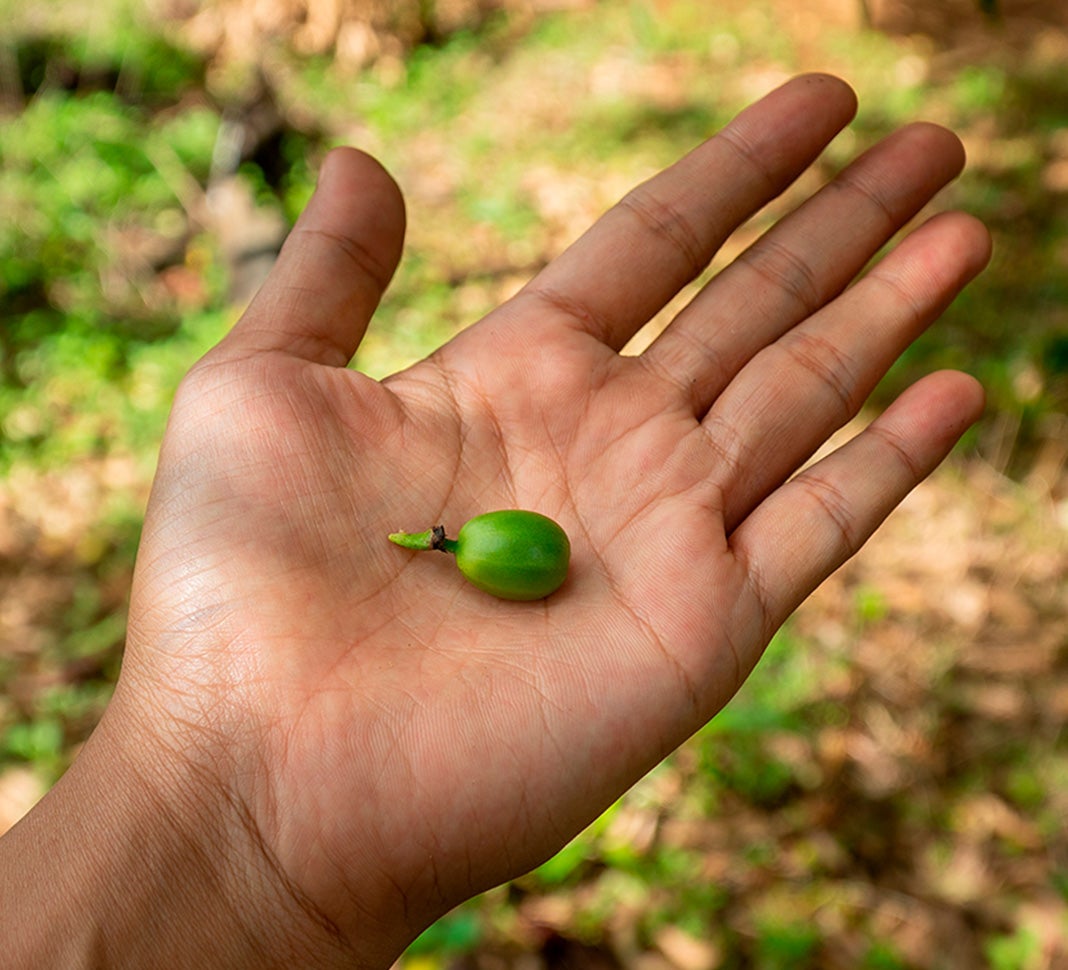
Today’s community favourites
Discover some of the most enjoyed articles from across the site

Global entrepreneurship programs with NESCAFÉ®
Brewing a better tomorrow
For many, coffee isn’t just a beloved drink, it’s an artform. NESCAFÉ® wants to inspire the creative minds of aspiring young connoisseurs with the training to become professional baristas.
Focusing on Latin American markets, training covers all aspects of running a coffee shop, from basic hygiene rules to machine maintenance, equipment layout, service standards and even etiquette. NESCAFÉ® can help increase their coffee knowledge and help boost their business with new recipes and ideas. With the Nestlé Young Baristas program, NESCAFÉ® can help fuel culture and creativity and help make the coffee world a little brighter.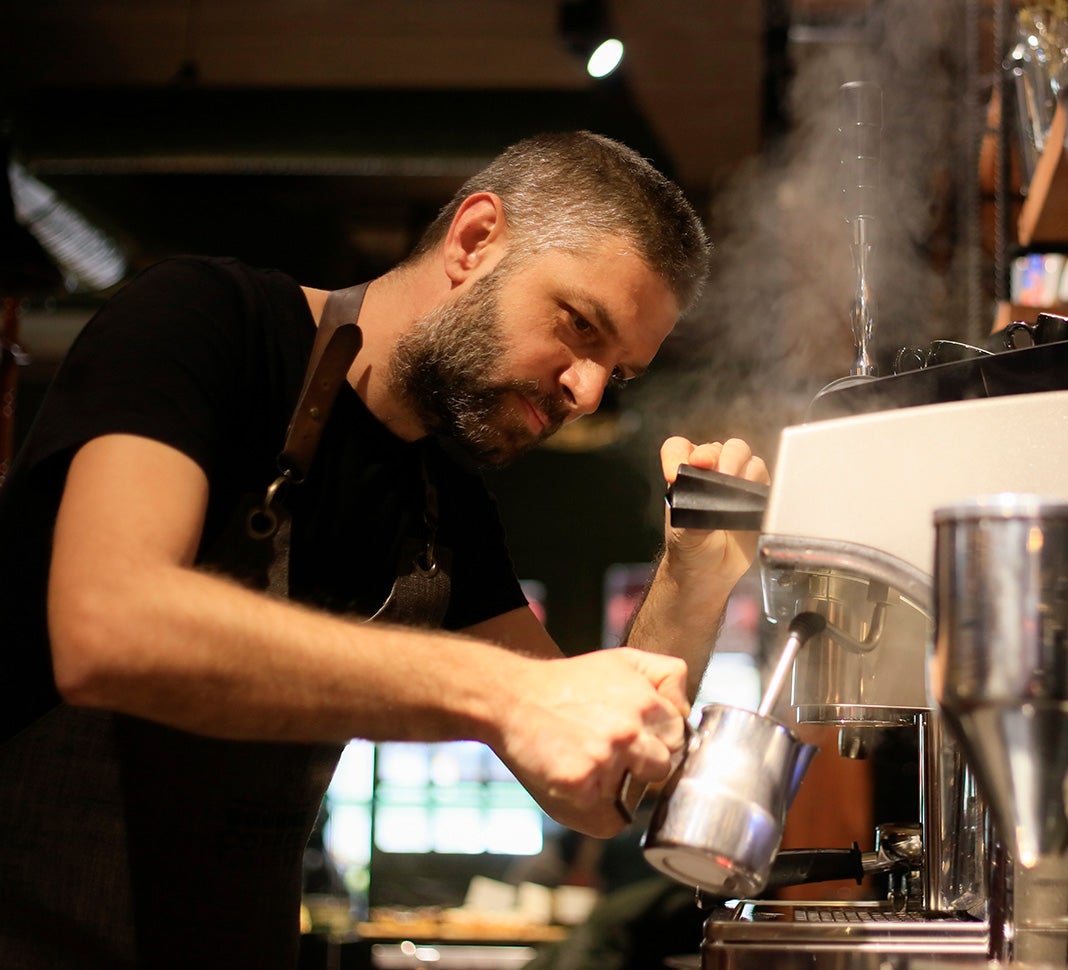
A brighter future is in your hands
NESCAFÉ® doesn’t just make coffee, it helps to create opportunities. In Cameroon, NESCAFÉ® doesn’t only promote entrepreneurship among the youth it makes NESCAFÉ® products more accessible to consumers.
The “My Own Business” program known locally as, MYOWBU, is a 10-year-old initiative in central and west Africa responsible for creating 135 jobs made up of 124 sales operators and 11 kitchen operators specializing in businesses that sell hot drinks. Open to any young and dynamic Cameroonian aged 18 and up, NESCAFÉ® offers commercial equipment and management tips to kitchen operators. Thanks to MYOWBU, NESCAFÉ® is helping to create opportunities for those with a coffee dream of their own.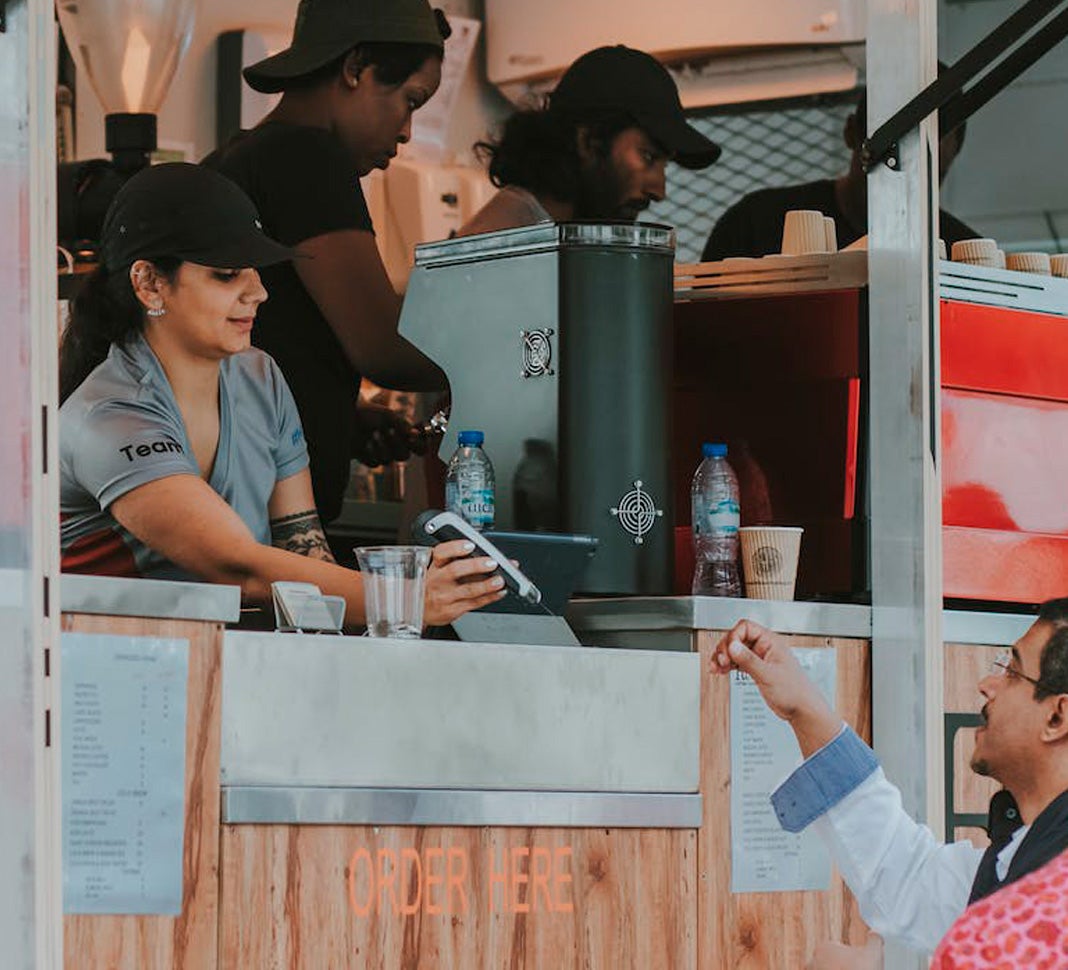
With the Nestlé Young Baristas program, NESCAFÉ® can help fuel culture and creativity and help make the coffee world a little brighter.

Waking up dreams in Cameroon
Meet Comfort Dorkutso, a Cameroonian woman who is no stranger to hard work. To help her family, she had to leave school early to find a job. The only position available was as a door-to-door revenue collector.
A difficult job. In 2013, Comfort noticed the Accra coffee vendors walking through a bustling crowd wearing bright red t-shirts and selling NESCAFÉ® to stall owners, pedestrians and even drivers in traffic. She later learned that many of these sellers were independent small business owners and she wanted to do the same. Comfort now earns around 200 CHF per month, can afford to rent a small apartment on her own, and help her family. With NESCAFÉ® as a business, Comfort’s dreams became a reality and hopefully will never stop growing.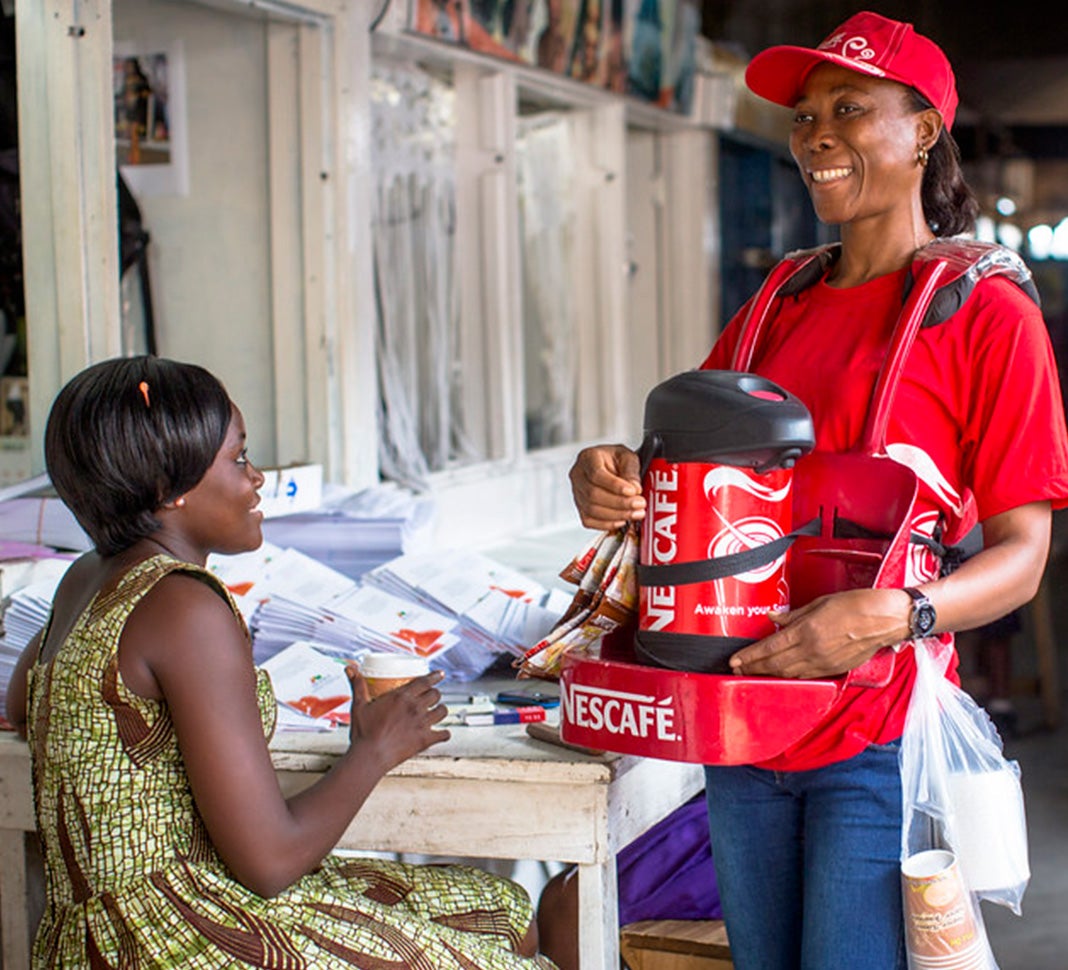
Rise and shine in Mexico
NESCAFÉ® knows that even the smallest coffee shop can be a source of good business. In towns and cities across Mexico, small coffee kiosks are an integral part of daily life. NESCAFÉ® will reach out to small coffee shop or kiosk owners and offer to invest in their business and convert it to a NESCAFÉ® site.
By partnering with a trusted global brand like NESCAFÉ®, average sales increased by 170%* in 2022! So far, NESCAFÉ® has helped entrepreneurs in up to 51 stores with plans to scale up in the next few years. It’s just a small way NESCAFÉ® can offer its help.*In 2022, in Mexico, the average throughput per machine in non-cobranded places was 27 cups, while machines in co-branded environments had a throughput of 73 cups.
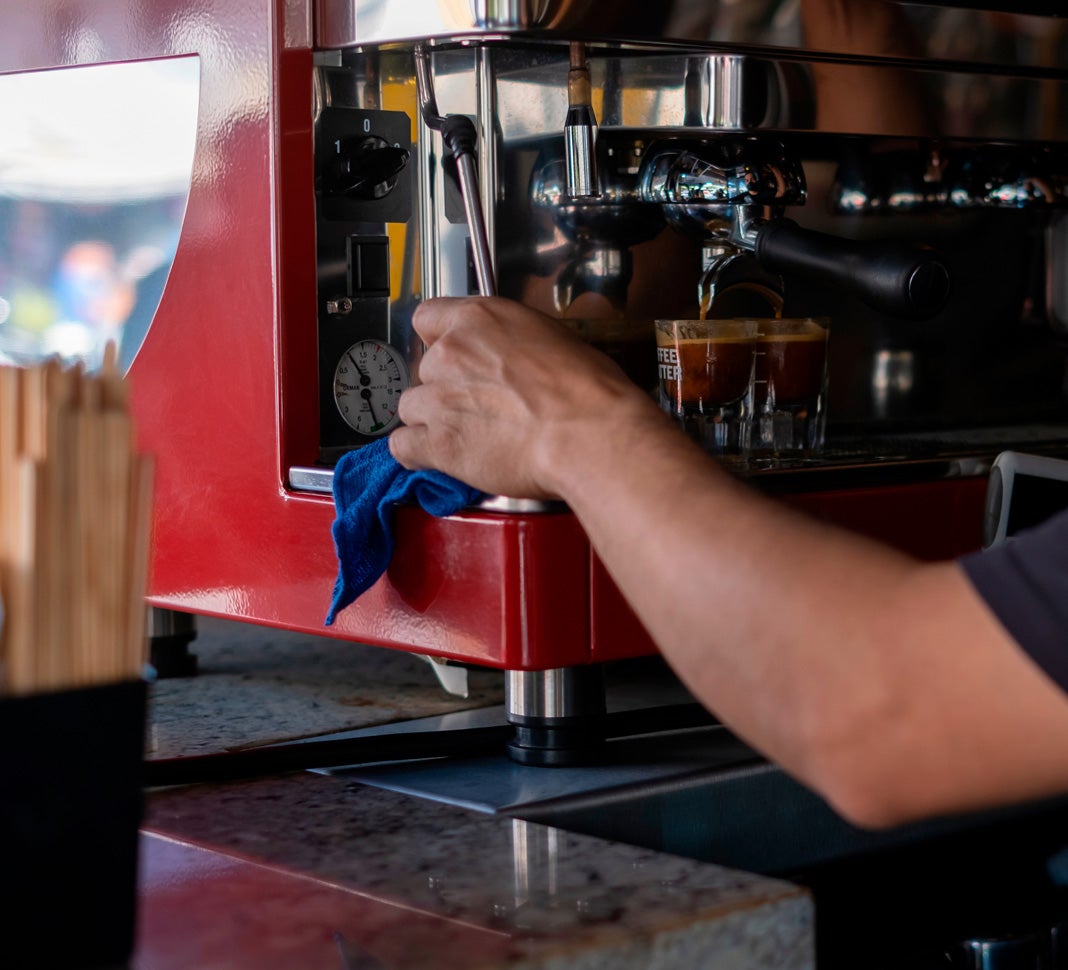
Today’s community favourites
Discover some of the most enjoyed articles from across the site

NESCAFÉ®'s Journey To a Circular Economy In Coffee Production
Something in the water
Water is one of the world’s most precious natural resources and some of our coffee requires a lot of it to grow. At NESCAFÉ®, we value the water needs of local communities. Today, NESCAFÉ® is helping farmers grow coffee with solutions that aim to protect water resources. In Vietnam, we’ve helped farmers use 50% less water for irrigation than previous official practices, helping maintaining the same productivity, and provided smart weather apps to tell when to turn on the taps and when to turn them off to help conserve water for their villages.
In our nearby coffee factories, we’ve helped to improve water efficiency and saved the equivalent of over thousands Olympic sized swimming pools of water every year. Using less water in coffee production helps improve water conservation in local communities, and support the protection of the water cycle. That’s why NESCAFÉ® aims to continue to help farmers do more with less water.
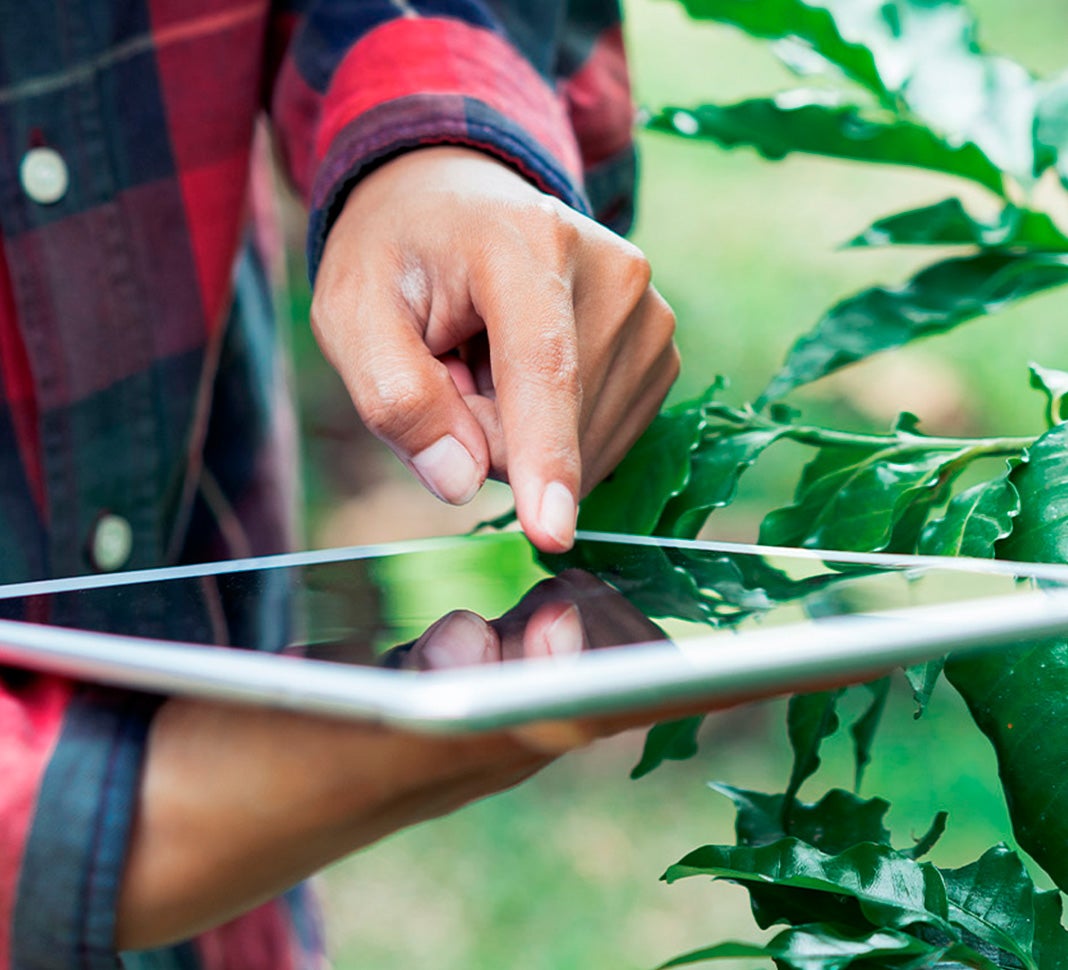
Like you, we're powered by coffee
The coffee grounds left over from the brewing process that makes your cup of NESCAFÉ® are being used to power the NESCAFÉ® factory in Gympie, Queensland.
The spent coffee grounds fuel a boiler generating the steam needed in the manufacturing process.
The renewable energy that we produce is equivalent to the energy needed to power 10,000 homes (over 40% of the homes in Gympie).
This keeps the spent coffee grounds out of our waste stream, reducing energy used for waste transportation and disposal.
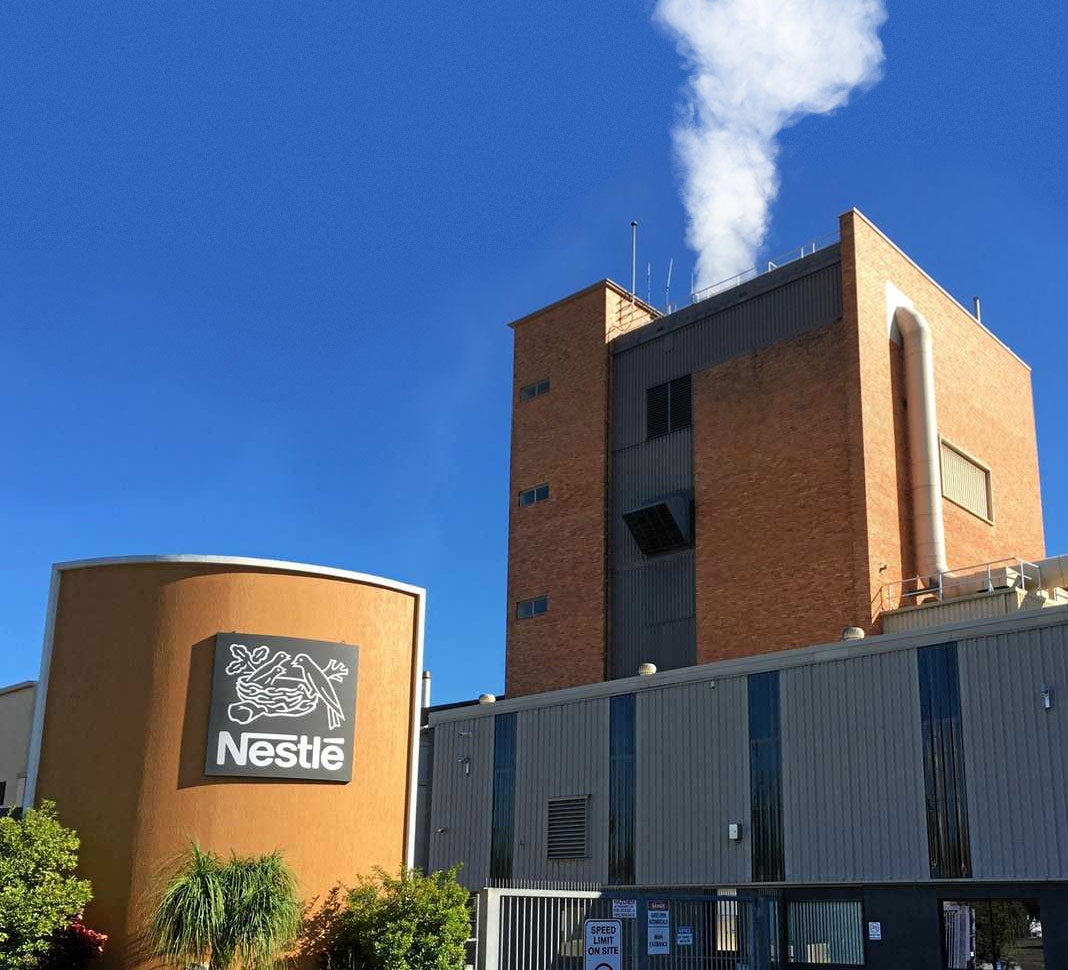
The coffee grounds left over from the brewing process that makes your cup of NESCAFÉ® are being used to power the NESCAFÉ® factory in Gympie, Queensland.

Sustainable coffee calls for sustainable packaging
NESCAFÉ® wants to keep coffee fresh, and our customers informed, while making a positive impact on the planet. NESCAFÉ® aims to provide packaging materials such as jars, cartons, capsules, and sachets that create less packaging waste, following Nestlé's commitment: 95% of our plastic packaging will be designed for recycling by 2025.
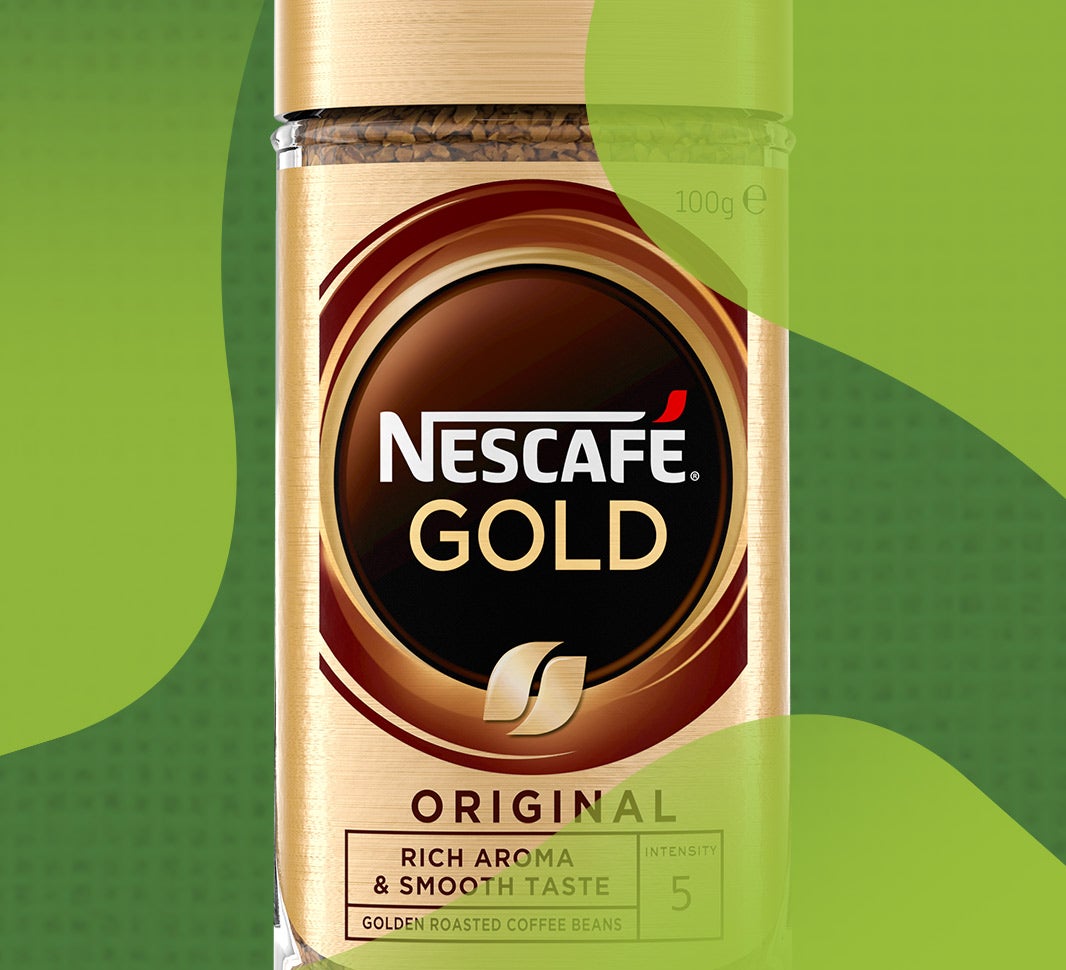
Inspiring the world of coffee, one cup at a time
NESCAFÉ® aspires to change in how its coffee is grown, sourced, manufactured, packaged, and consumed. Every time you enjoy your favourite NESCAFÉ®, you are supporting a global initiative to help the environment and inspire others to do the same. Every day, NESCAFÉ® is on a journey towards a circular economy.
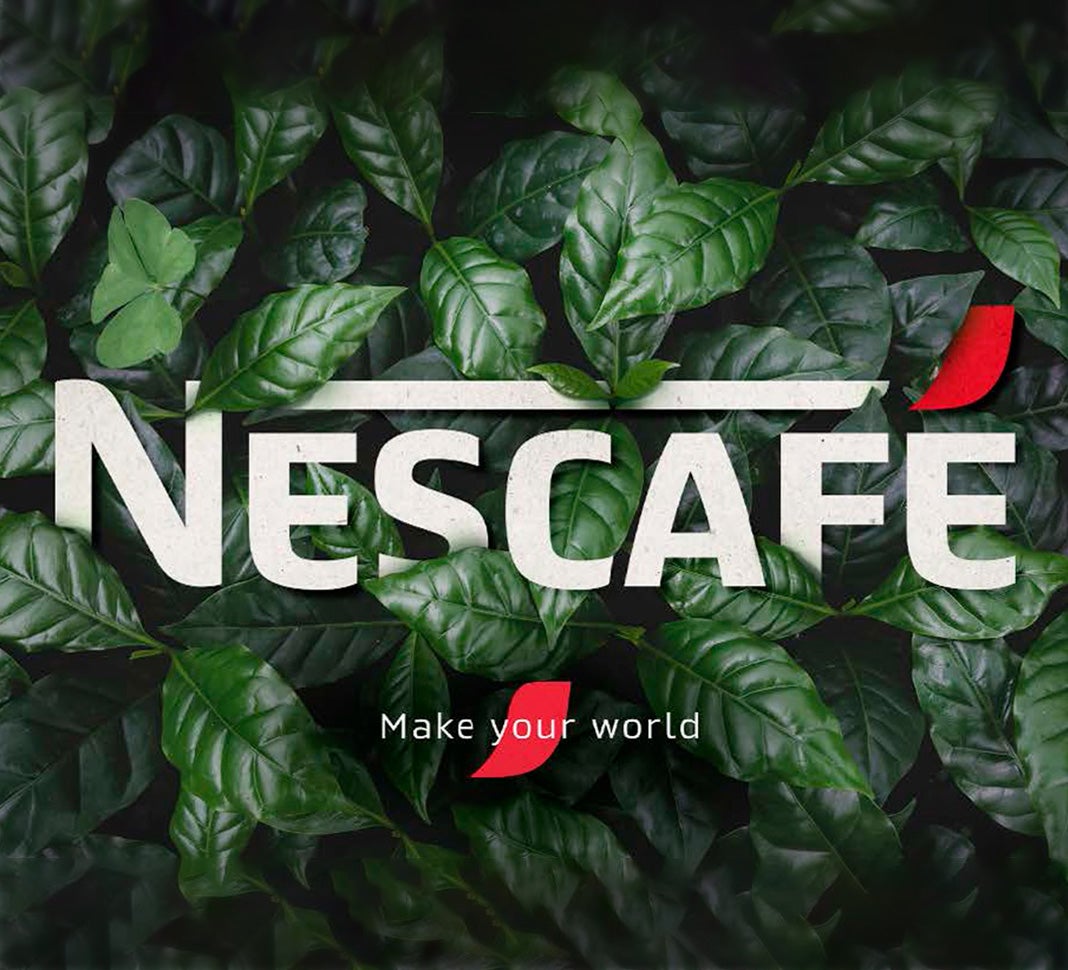
Today’s community favourites
Discover some of the most enjoyed articles from across the site

Sustainability Tips
TIP 1: A SMARTER WAY TO TAKEAWAY
Reduce waste and save money by filing a resuable travel mug with your favorite NESCAFÉ® coffee before you leave the house. Treat yourself to a coffee break on the move!

TIP 2: BREW WITHOUT BOILING
The best temperature for NESCAFÉ® is hot, not boiling and we recommend ~80 ºC. It makes for better flavour and uses less energy. Did you know boiling a whole kettle three times a day uses approximately 110kWh of electricity a year?
By heating water to just 80ºC each time, you could save 22kWh each year, enough to power a 50” LED TV for 1,375 hours! Next time you heat water, take it off the boil just as the bubbles appear. It makes a better cup and helps reduce impact on the environment.
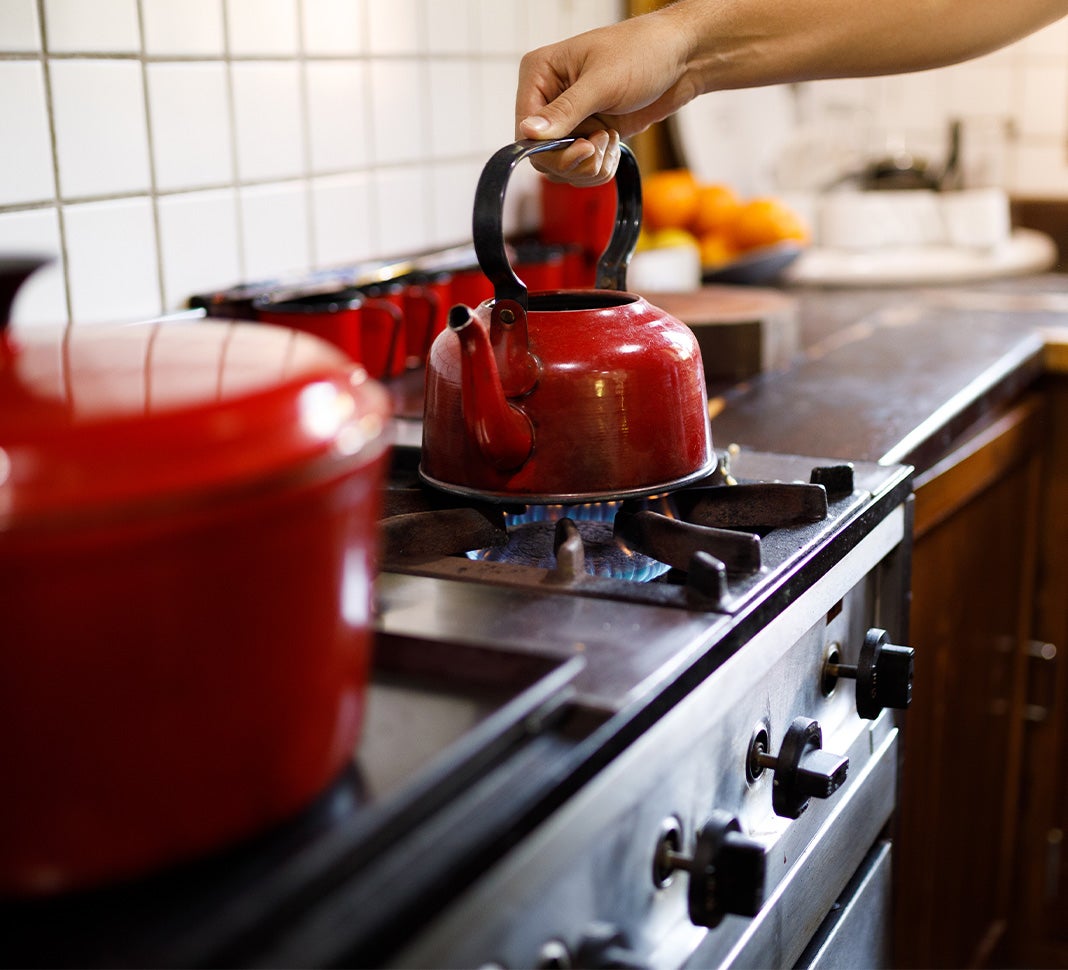
TIP 3: A BETTER TOMORROW IS IN YOUR HANDS
It might take a small extra step, but recycling can makes a difference. Did you know that your NESCAFÉ® Blend 43 and NESCAFÉ® Gold glass jars and caps are recyclable?
So, when it comes to recycling, a little really can go a long way. Please check the instructions on each pack for the best ways to recycle your favourite NESCAFÉ® products.
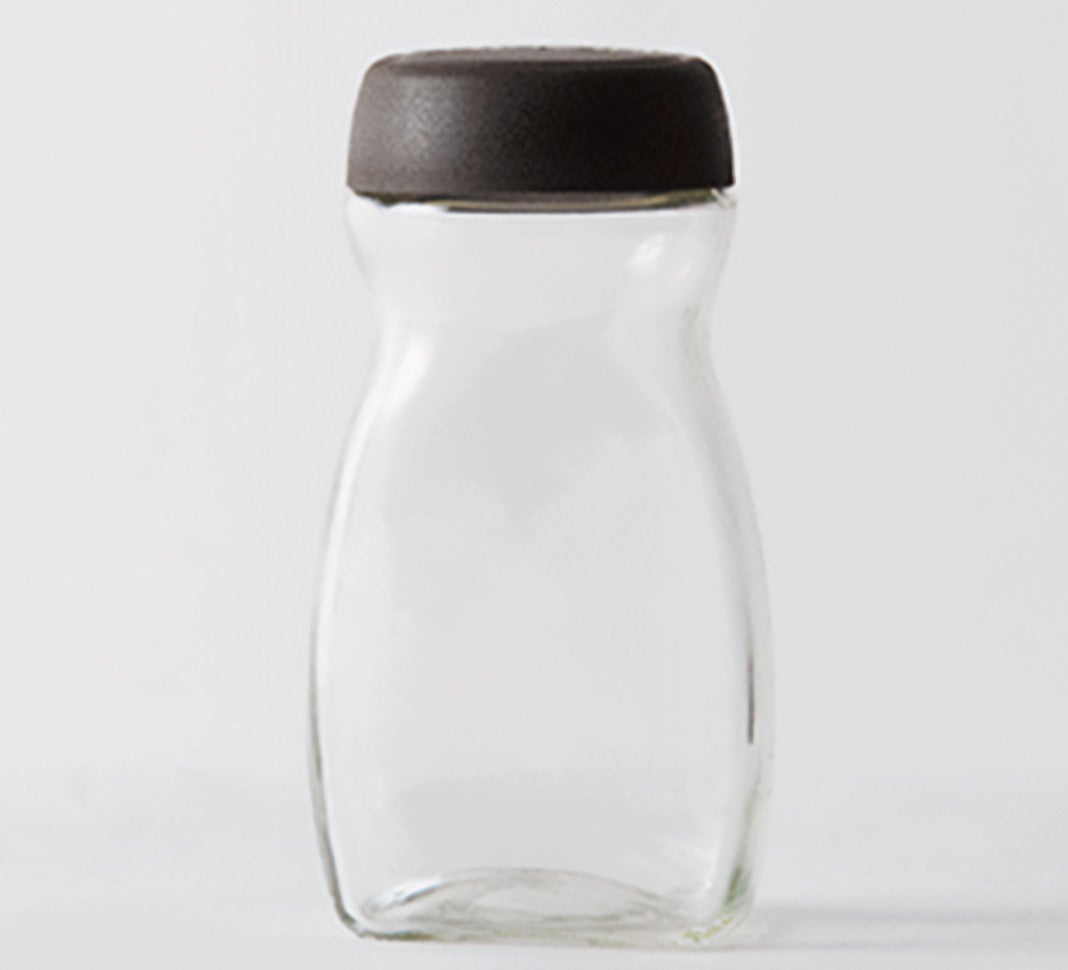
Today’s community favourites
Discover some of the most enjoyed articles from across the site

16 Fun coffee facts to liven up your day
Coffee goes back a really long way
Coffee is thought to date back to 800 A.D., where it was discovered by 9th century goat herders. It was said that they noticed their goats eating the plant and afterwards it appeared like they were ‘dancing’. Fascinated by the results, the goat herder tried them himself and discovered that it made him excitable too.
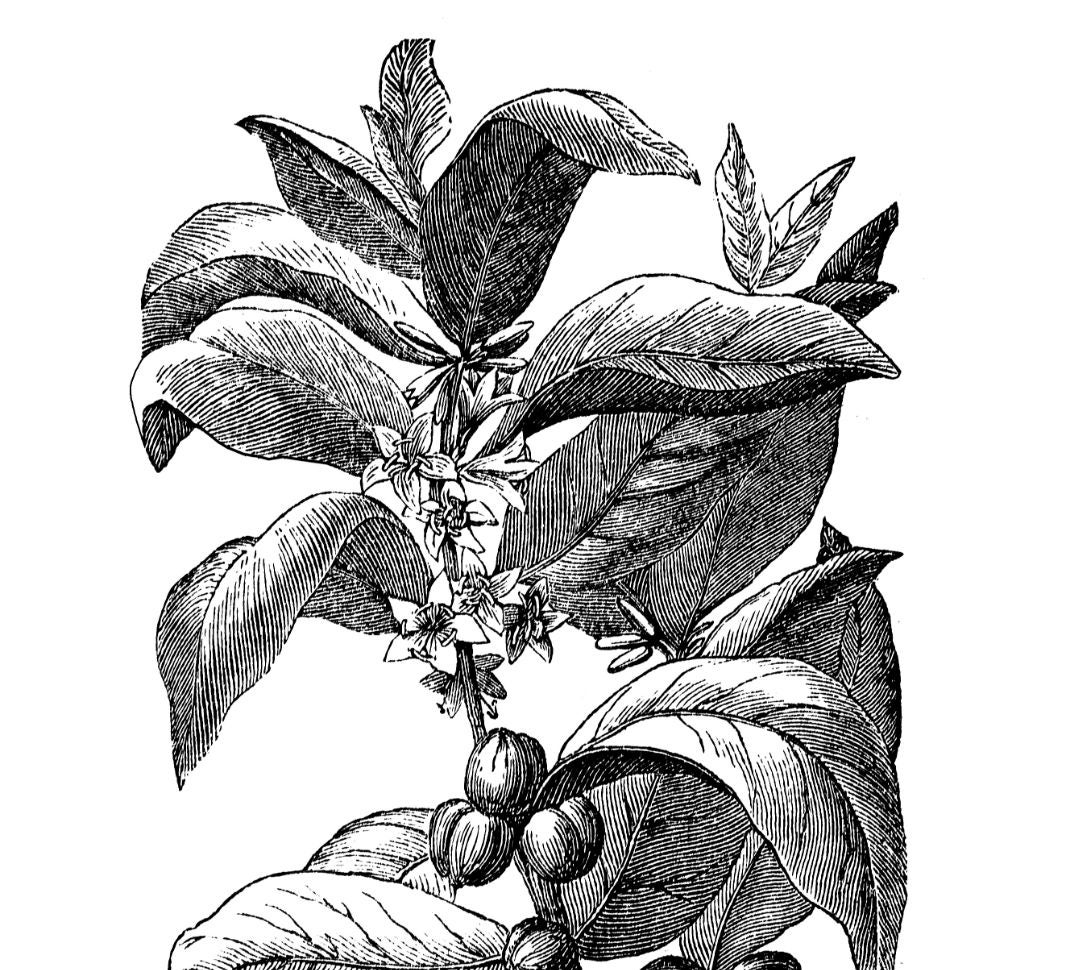
Coffee is a fruit
Despite it being called a ‘bean’, coffee is actually a fruit. The ‘beans’ grow on a bush and are found in the centre of a berry, known as a coffee cherry.
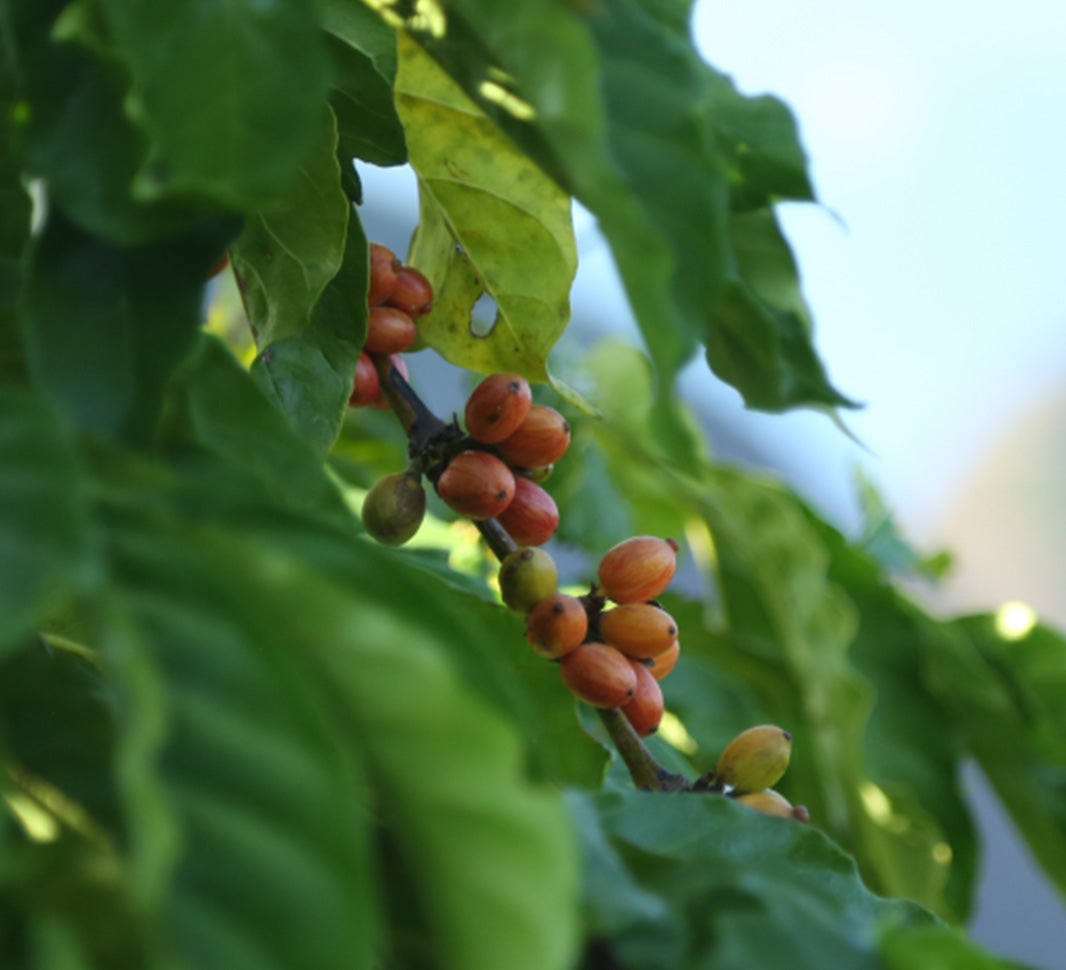
Whether it helps you make the most of your day, or the perfect excuse to catch up with old friends, coffee plays a small but important part in our everyday lives.

Beethoven loved coffee
This may surprise you, but infamous composer, Beethoven, loved coffee! He was apparently quite obsessive about it, using precisely 60 beans per cup and would spend time counting out each and every bean.
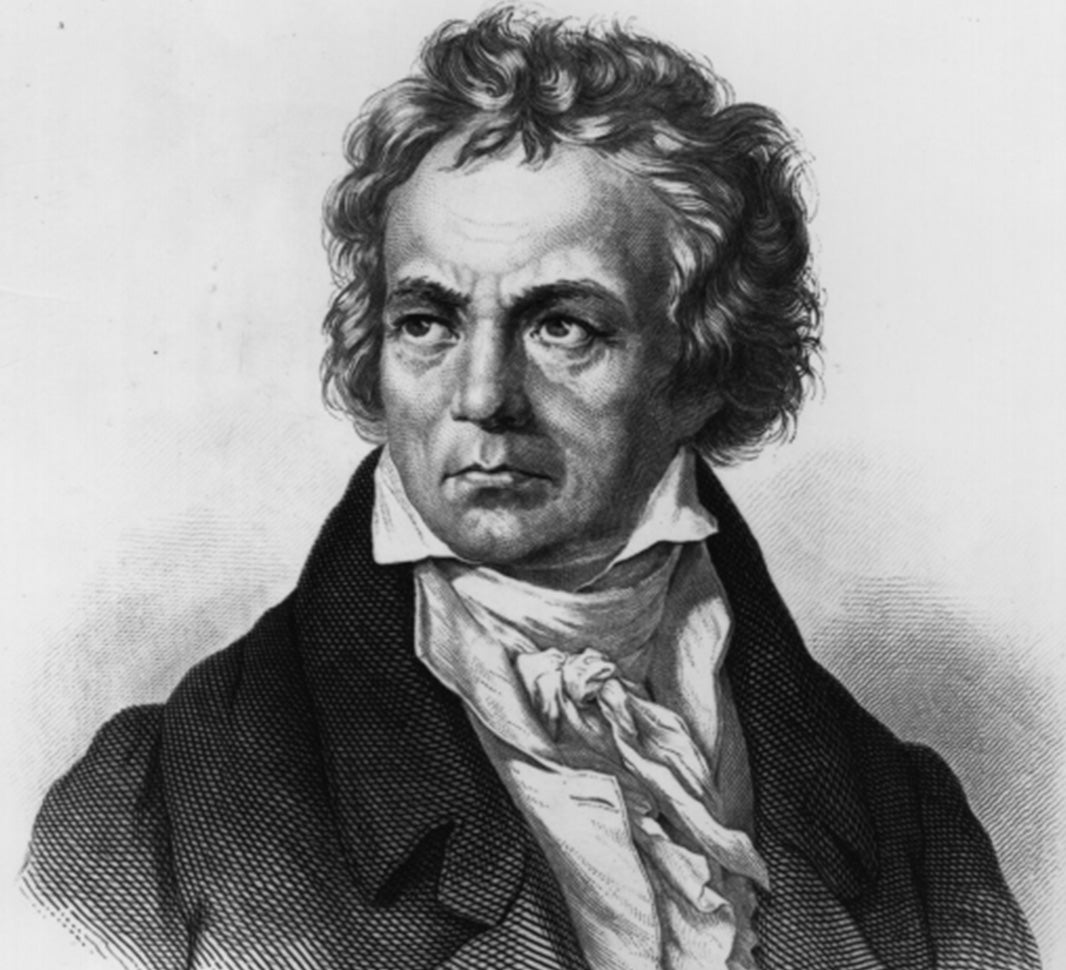
Brazil grows the most coffee in the world
It’s widely known that Brazil is one of the biggest coffee hotspots, but did you know it’s responsible for around a third of all the coffee in the world? Brazil is the number one coffee producer, followed by Vietnam and Colombia.
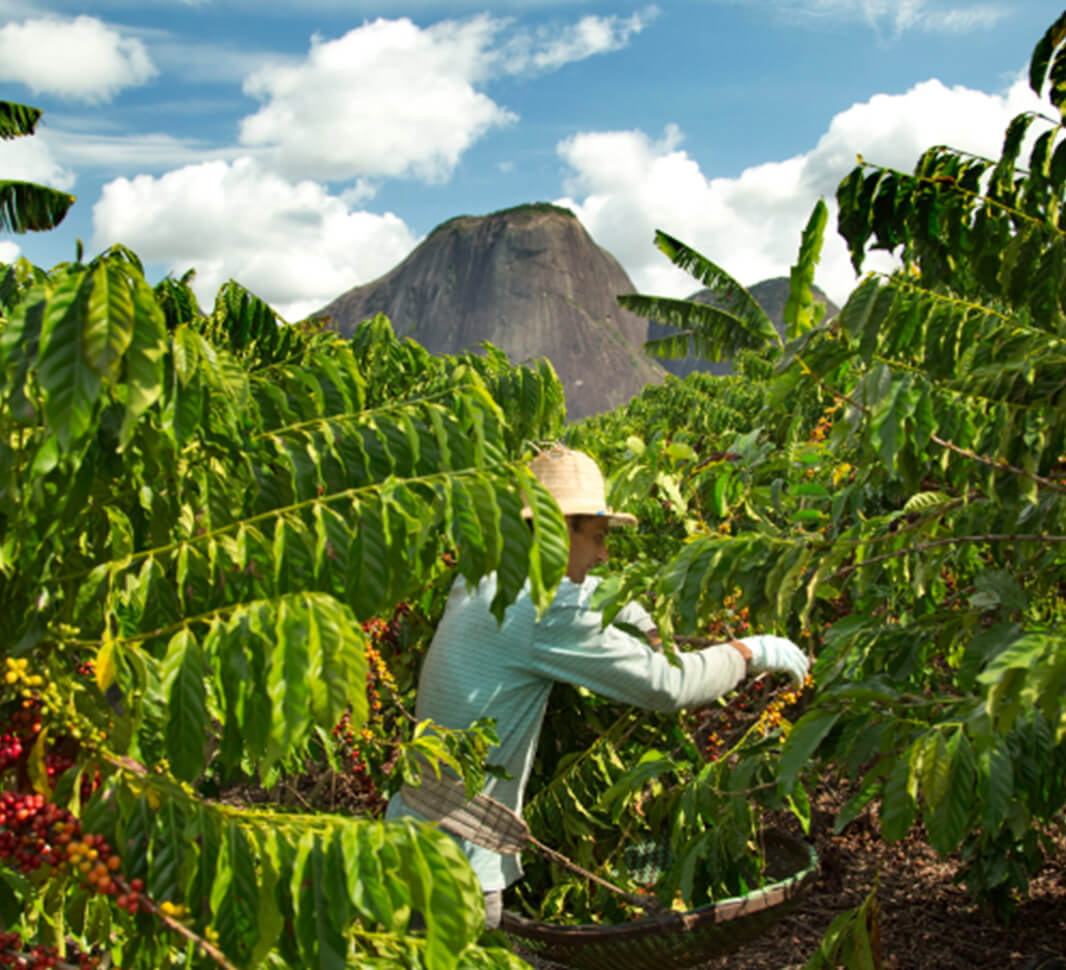
Finland consumes the most coffee in the world
Where Brazil may grow the most, Finland drinks the most coffee! On average they drink 12kg per person, per year which works out to an impressive 1,680 cups on average each a year. Now how’s that for a coffee fact?

Coffee wasn’t always enjoyed with breakfast
Despite coffee being known as one of the most popular drinks to have with breakfast (followed by tea), prior to the 18th century, beer was actually enjoyed with the first meal of the day!

Coffee helped Brazil go to the Olympics
In 1932, the Brazilian government didn’t have enough money to send their athletes to the Olympics, so they funded the trip by selling coffee. They loaded up a ship of coffee beans, hoping to sell it to California on their way. We love this heart-warming coffee fact!

Coffee wasn’t always for drinking
Before coffee was discovered to be a delicious beverage, it was actually a food. East African tribes would grind the berries and mix them with animal fat to eat.

There are two different types of coffee bean
Two types of coffee bean are used for drinking; Robusta and Arabica. Arabica has lower acidity and smoother taste, whereas Robusta is more acidic and bitter.
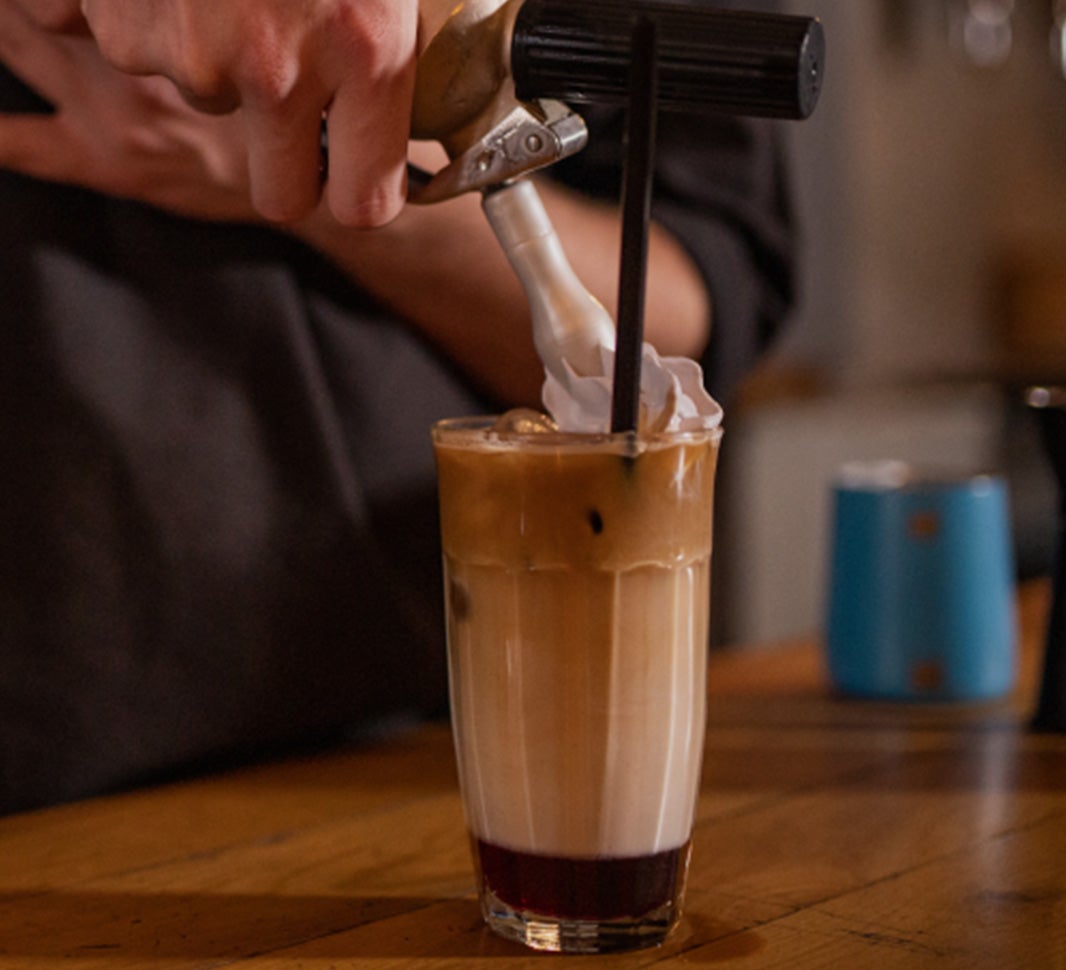
Decaf doesn’t mean no caffeine
For a coffee to be classed as decaf, it needs to have less than 0.3% caffeine.

The decaffeination process helps to create our favourite soft drinks
Once caffeine has been removed (for decaf coffee), the caffeine will usually be sold to soft drink or pharmaceutical companies.
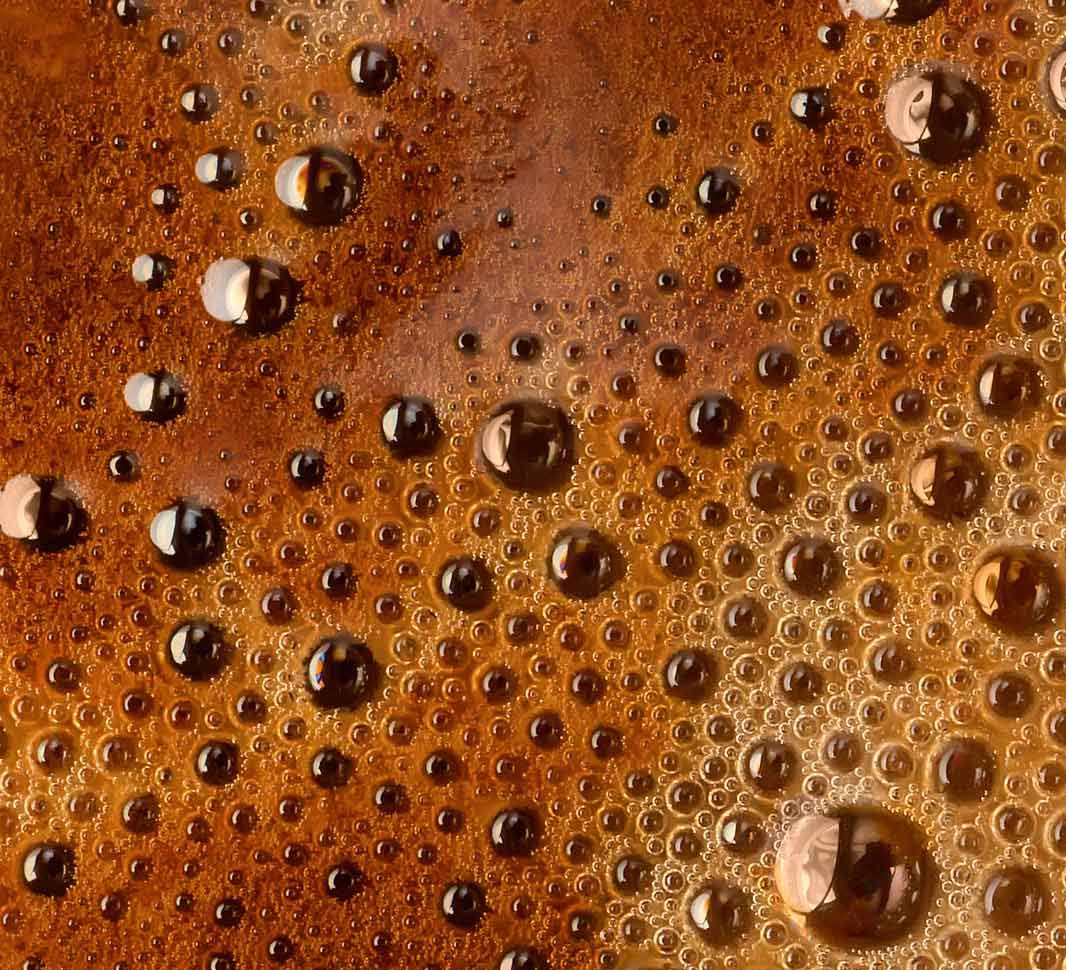
NESCAFÉ® produced the first instant coffee
We’re quite proud of this coffee history fact because it was us who created the first successful instant coffee blend! The story goes all the way back to 1929 when Brazil was looking for a solution to help with the coffee surplus in the country. After which, years of careful research led to the development of the NESCAFÉ® brand. Find out more about the history NESCAFÉ® here.

Coffee was once banned
Coffee wasn’t always as loved as it is today. In the 18th century, governments tried to ban the beverage because it was thought to stimulate radical thinking. Our favourite drink was actually banned in Sweden for a while in 1746, along with anything related to it – including cups and saucers!

The most expensive coffee in the world costs $600 per pound
Kopi Luwak is the most expensive coffee in the world, and as of 2019, it cost $600 per pound. Native to Indonesia, the coffee is roasted after being eaten, digested and expelled by the Palm Civet. It’s said that they only eat the very best, sweetest and freshest coffee cherries and when ingested, it’s naturally fermented, giving it a distinctive flavour. Would you try a cup of Kopi Luwak?
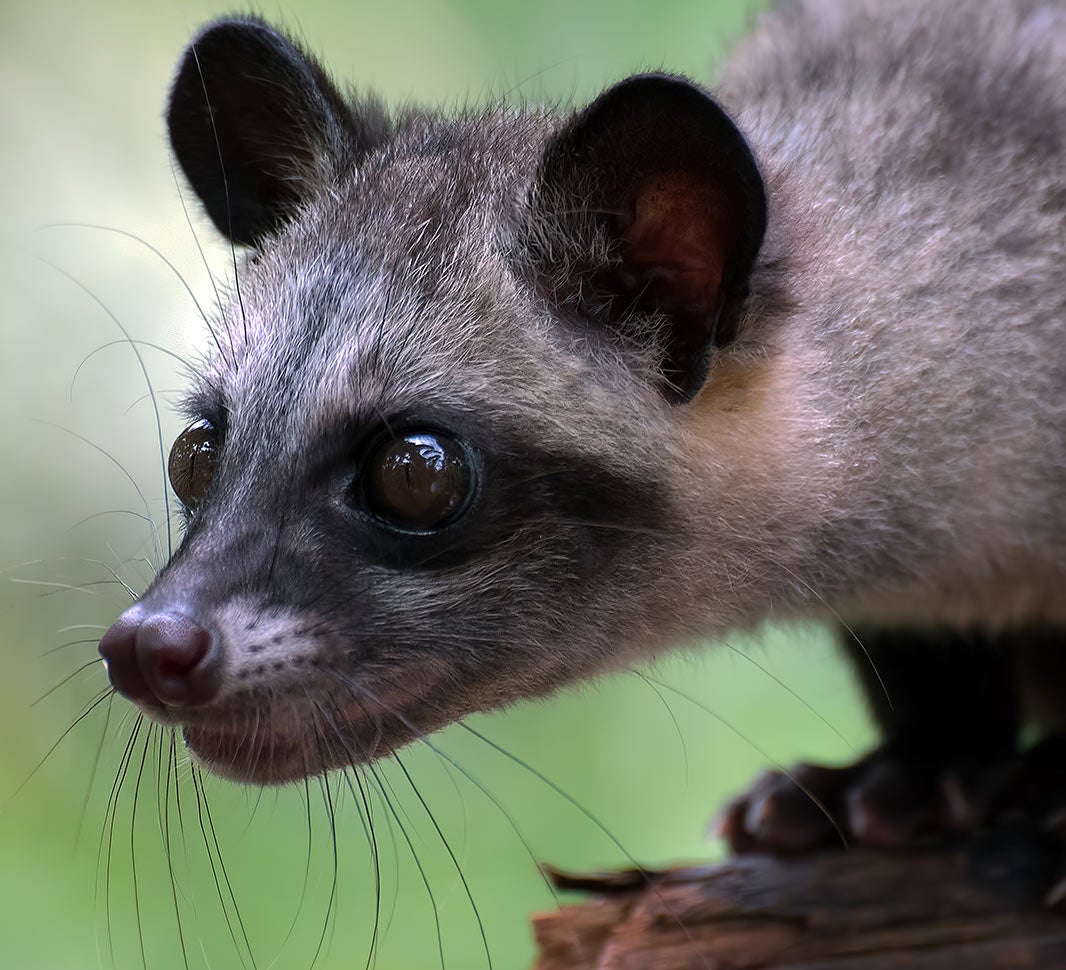
The largest cup of coffee in the world was over 26,000 litres
Yes, you heard right! The largest cup of coffee ever made was 26,939.22 litres. The brew made in Mexico, on 10 December 2022, took 300 kg of coffee and currently holds the Guinness World Record.
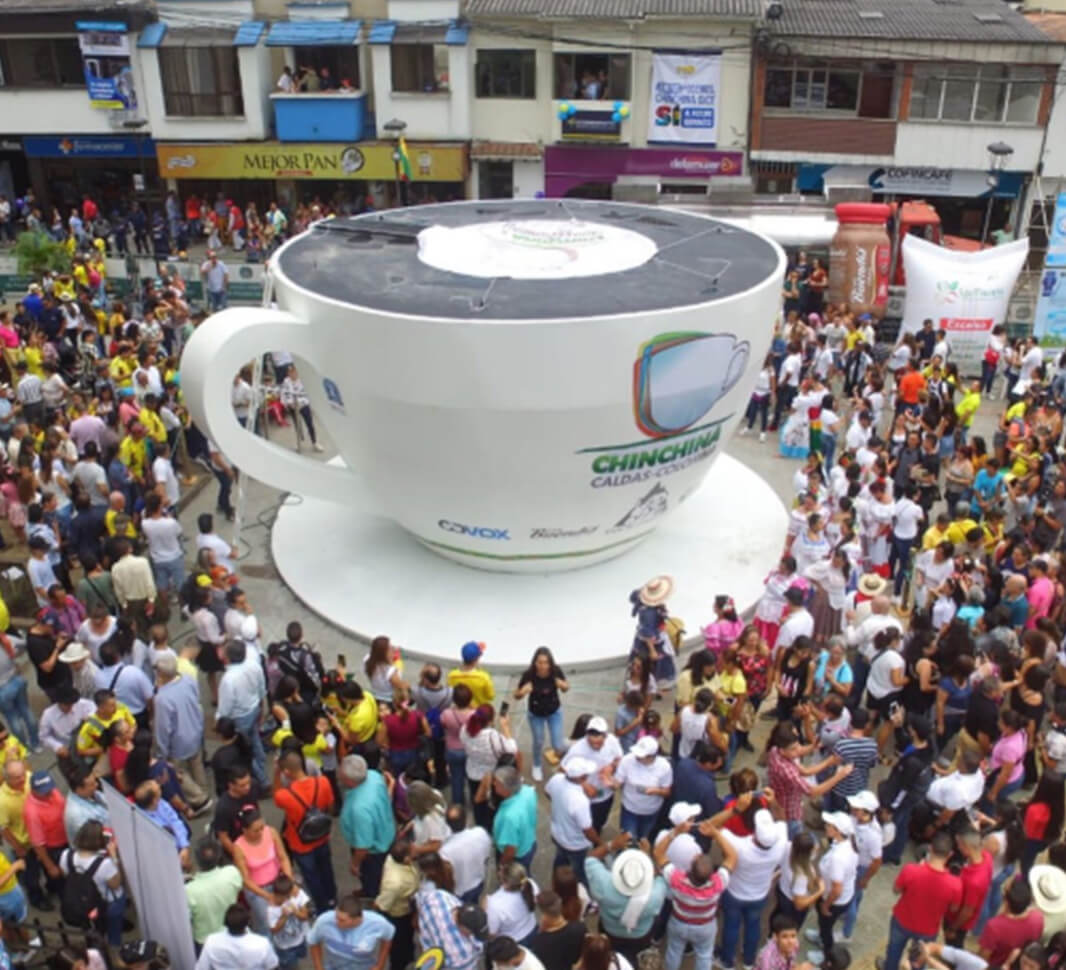
Australians love coffee
Australia drinks around 15.4 cups of coffee on average per week.
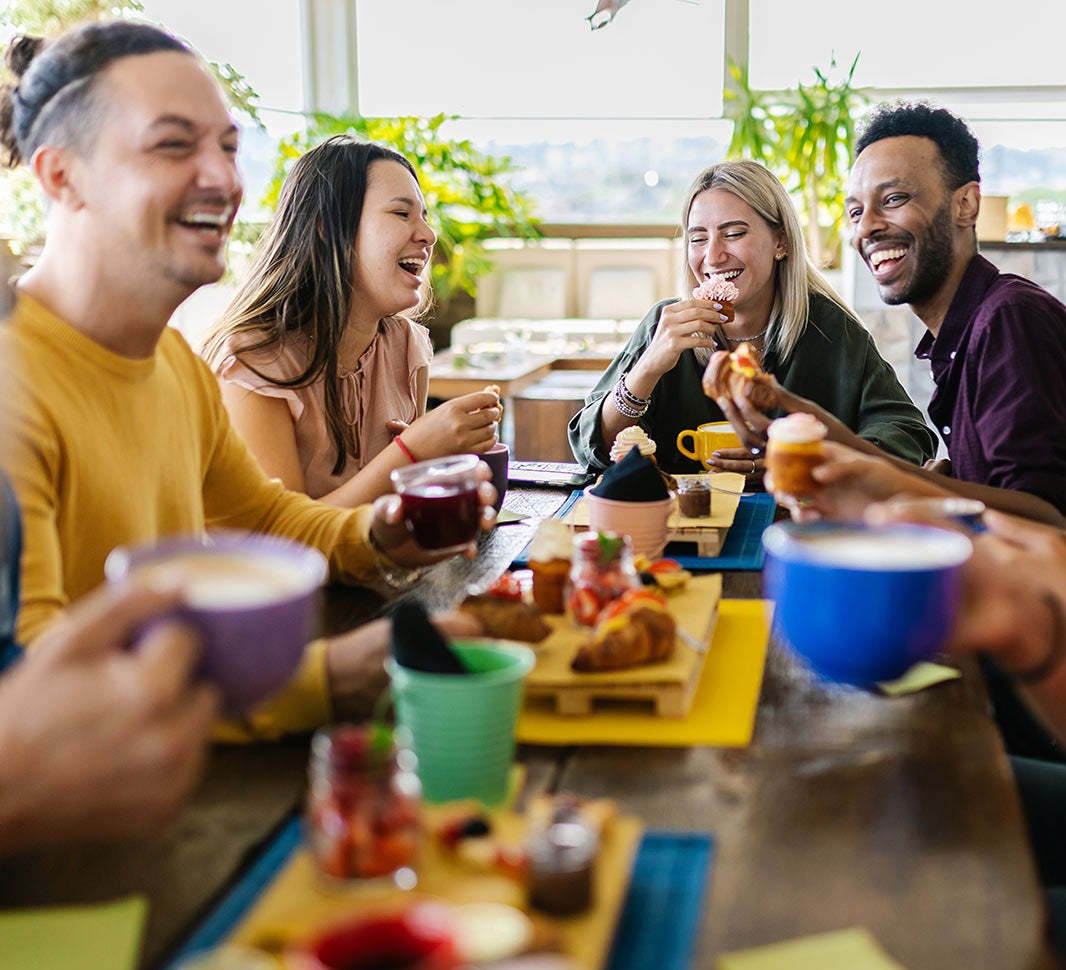
Today’s community favourites
Discover some of the most enjoyed articles from across the site

The More We Know The Better We Are
A recipe for positive change
Every good recipe requires care, attention, and accurate measurements. Measuring NESCAFÉ®’s impact on the ground starts with assessing net farm income and measuring farmer livelihoods from coffee and other crops. Next, comes a measure of our impact on farming families. Finally, aspects like soil health, biodiversity and water are measured to track the carbon reduction.
This helps NESCAFÉ® to work closely with farmer groups to get their perspective, understand their challenges and work to develop practical solutions to help create sustainable and regenerative benefits that aim to improve livelihoods, and natural resources.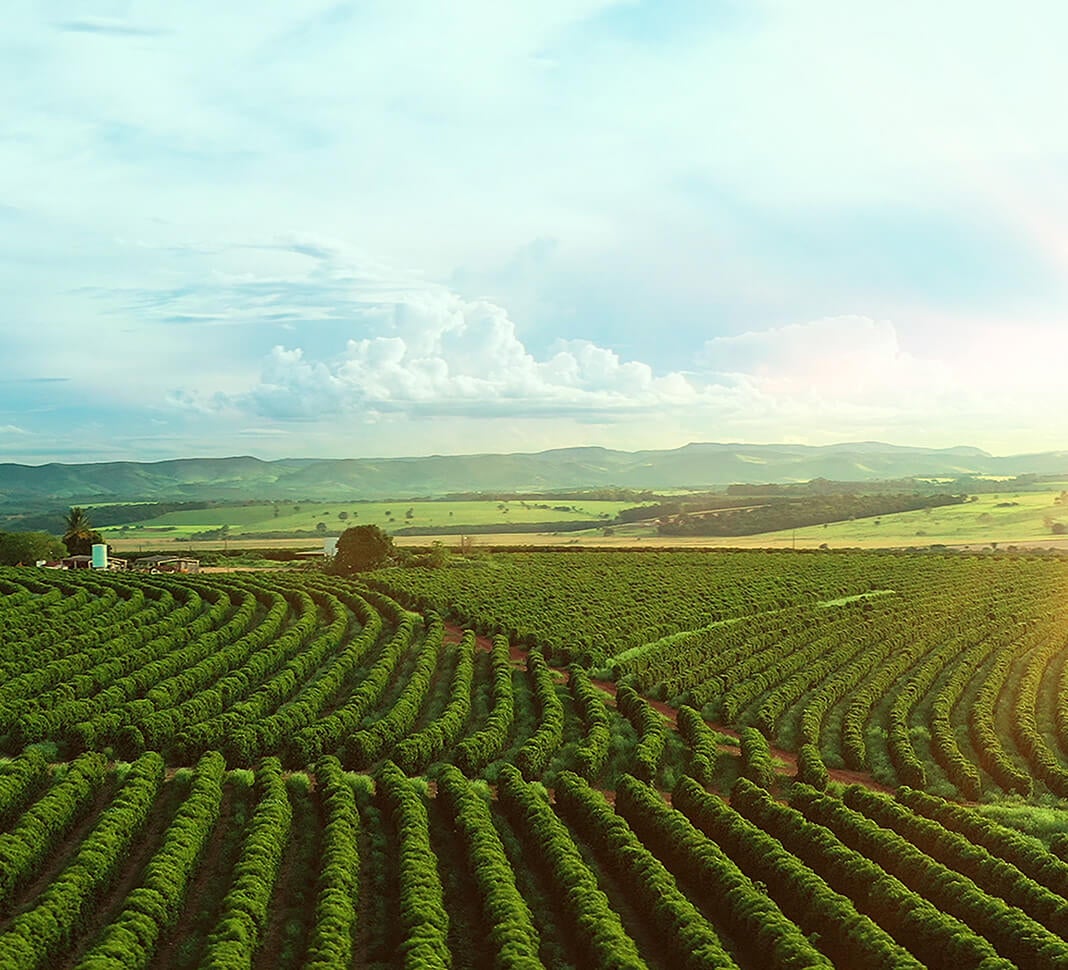
The more we know, the better we are
No matter how much good you think you’re doing, you can’t say for sure without solid data. Our close partnership with the Rainforest Alliance helps NESCAFÉ® assess all the field programs around the world with visible results. Having this knowledge lets us share, evaluate, improve, and adapt our activities with the aim to bring long-term benefits to hundred thousands of coffee farmers.
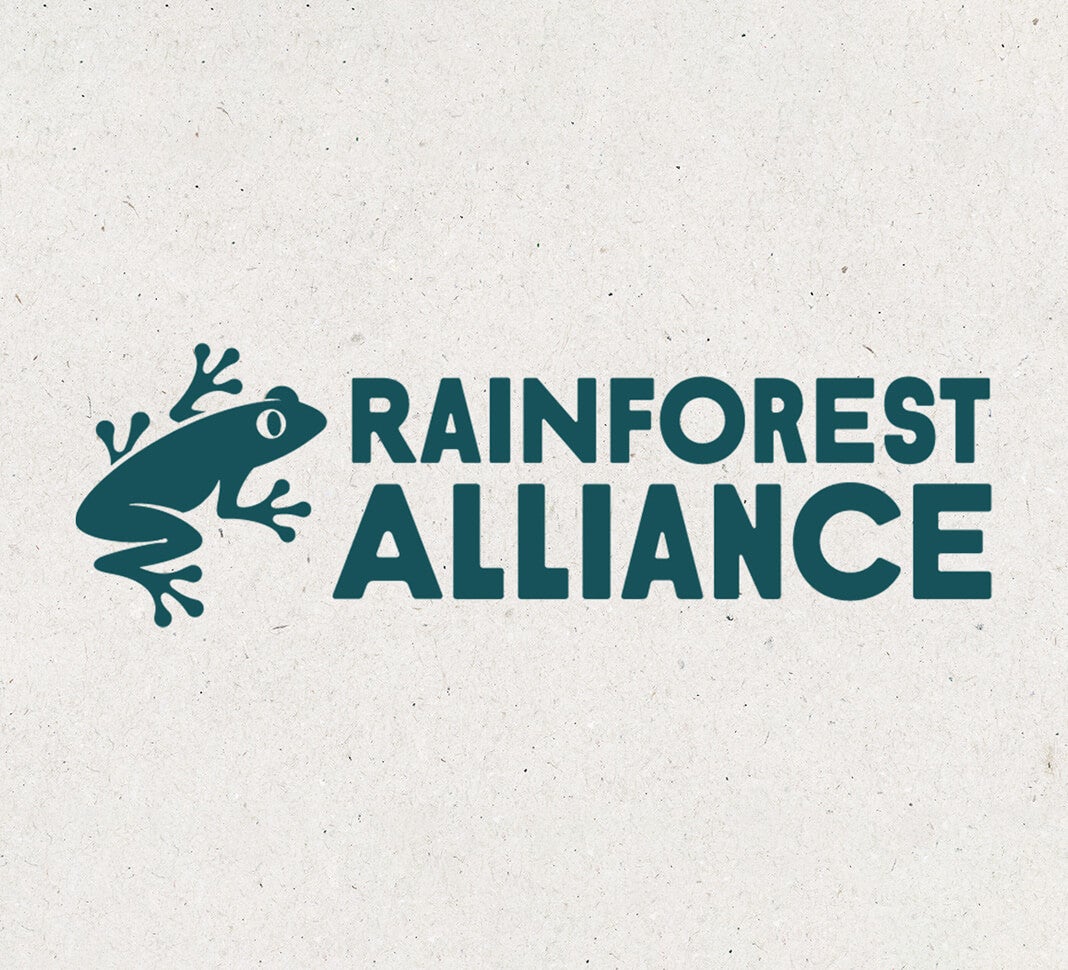
NESCAFÉ® provided 37 million leaf rust resistant coffee plantlets to over 33,000 coffee farmers facing a major outbreak. Our data identified which varieties were working with a 93% survival rate and 50% rise in productivity.

Earning 5 stars in mexico
Through monitoring and evaluation, NESCAFÉ® did more than mitigate the impact of a leaf rust crisis in Mexico in 2014. We then spoke to farmers to learn what else we could do. NESCAFÉ® provided 37 million leaf rust resistant coffee plantlets to over 33,000 coffee farmers facing a major outbreak.
Our data identified which varieties were working with a 93% survival rate and 50% rise in productivity. Afterwards, NESCAFÉ®’s team managers provided field training and more investment in farm labour. After all, it takes good data and good conversations to make a lasting positive impact.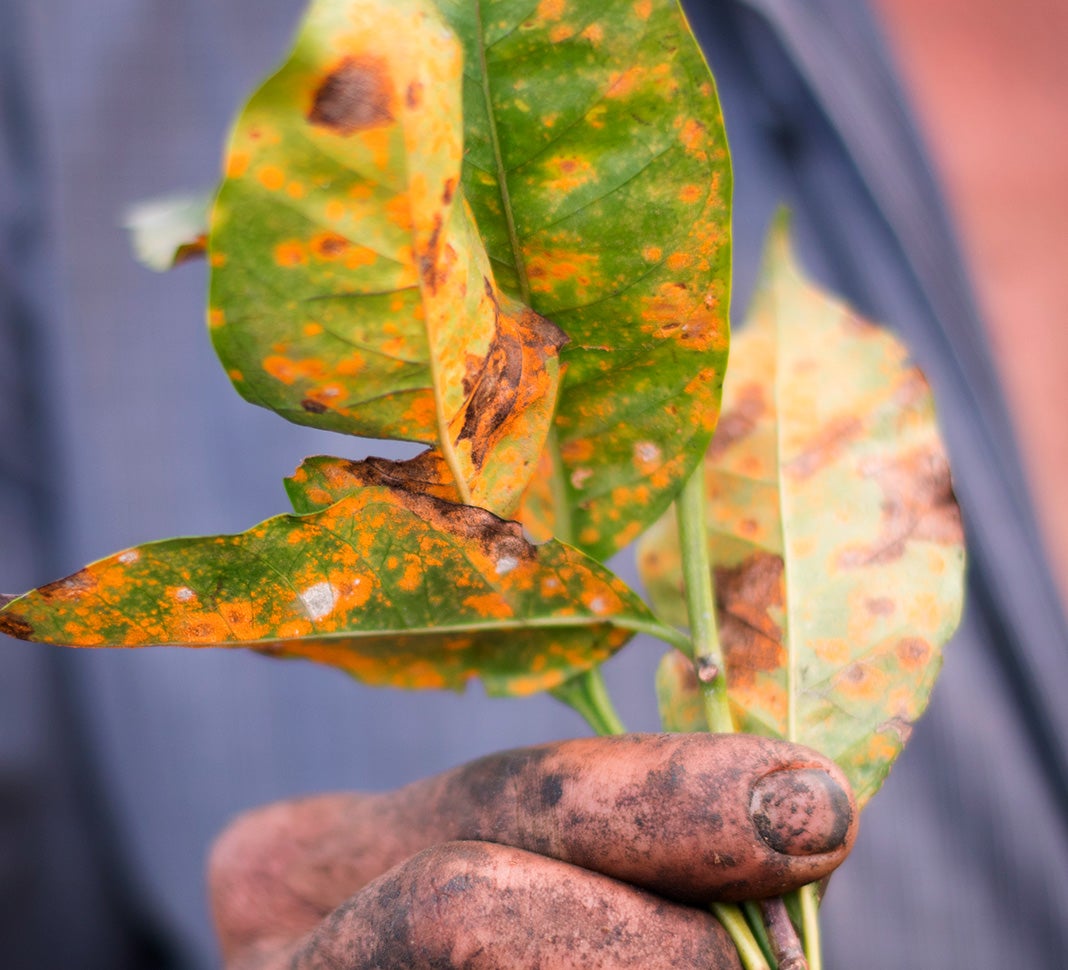
Hitting the books in Vietnam
To effectively solve a problem, a thorough understanding of its nature is essential. In Vietnam, NESCAFÉ® sought to enhance the livelihoods and productivity of economically vulnerable coffee farmers grappling with high production costs, inefficient irrigation, and dependence on a single crop.
To support, NESCAFÉ® provided 9 million plantlets to over 14,000 farmers, which increased yields. We also delivered training on agricultural practices such as intercropping, and imparted financial literacy and record-keeping skills. By 2020, 89% of farmers in the NESCAFÉ® field program maintained financial records, which proved beneficial.By adopting better records and using high-yielding plantlets, farmers were able to invest in their fields, improve irrigation management, diversify their crops, and increase productivity, leading to higher incomes. It's remarkable how becoming more effectively organised can make such a significant difference.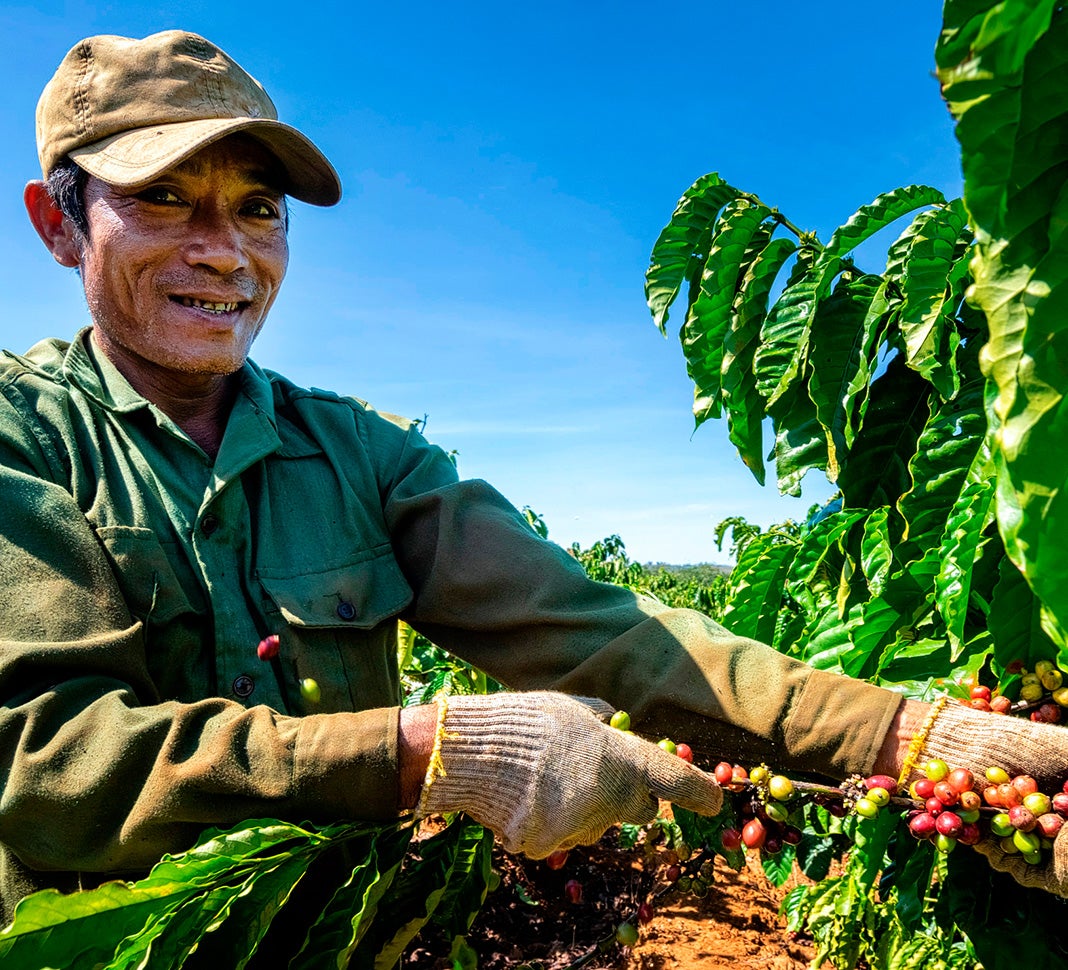
Today’s community favourites
Discover some of the most enjoyed articles from across the site

NESCAFÉ® coffee culture
What's popular
See what’s trending in your part of the world



You may also like
Recipes to keep your warm you up this winter

